Then, as now, the 1967–76 Dodge Dart offers temptingly cheap thrills
If you’re over the age of, say, 40, you might think of the Dodge Dart as something your math teacher drove. Or maybe your mom commuted in one. Perhaps a Slant Six-powered Dart sedan was your winter driver—it probably wasn’t your dream car, either, which is fair enough. The Dart was a budget compact first and foremost, and Dodge sold plain-Jane versions with Slant Sixes or lethargic V-8s in the hundreds of thousands.
For most people, it was an A-to-B-mobile, but that pedestrian reputation is precisely what makes the high-performance versions so dang cool. Some of the sporty Darts were true sleepers with dog dish hub caps and dark shades of paint. Other cars shouted for attention with high-impact paint and hilarious hood scoops. The combination of little car, big (and tunable) engine, and low price compared to its competition was a winning formula back in the day. Half a century later, Darts are still one of the more tempting values in the wide world of classic American muscle.
Birth of the Dart
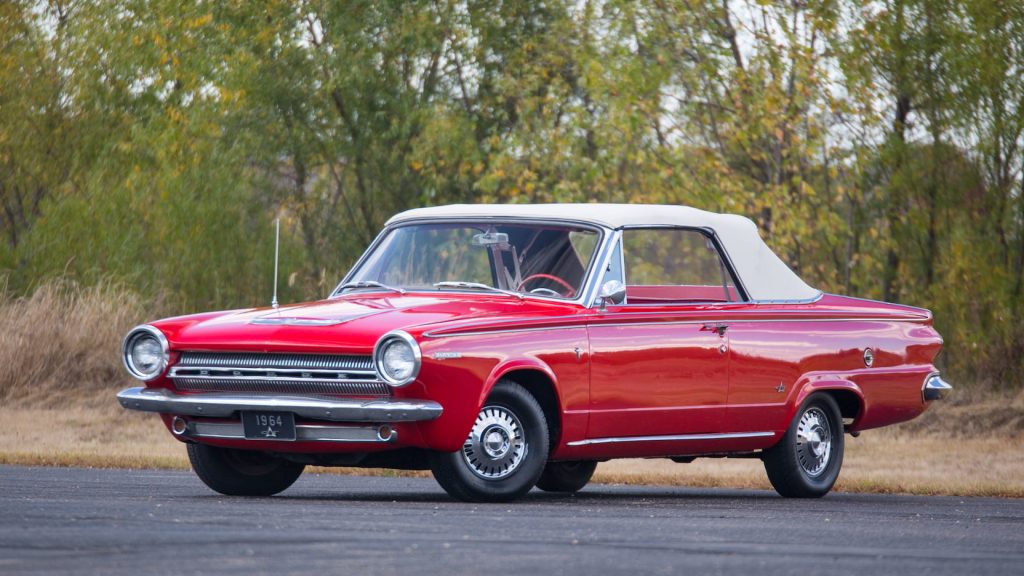
Technically, the very first Dart was a 1956 Chrysler concept car by Virgil Exner and Ghia, but the true production Dodge Dart first saw the light of day in 1960. A market research program came up with the name “Zipp” for Dodge’s new downsized low-priced line but, thankfully, the top brass went with Dart instead. Then, in 1963, Dodge updated its Lancer series but dropped that name in favor of Dart, selling that series until 1966.
Now on the A-body platform with an 111-inch wheelbase, the 1963–66 Dart was a good-looking car, but it really only had room for a 273 cubic-inch V-8 under the hood. For speed freaks at the dawn of the muscle car age, that was a let-down.
Good news came in 1967 with Chrysler’s redesign of the A-body platform, which also included the Plymouth Valiant and Barracuda. The 1967–76 Dart’s shape, while a clean and subtly muscular three-box design, isn’t the most exciting thing to behold. What really matters, though, is under the skin. Wider frame rails meant more room under the hood, and although it’s still tight under there, bigger engines could now fit. The 273 V-8 remained in the lineup until 1969, but it wasn’t alone, and the Dart soon joined a new breed of American muscle.
Getting serious with the GTS
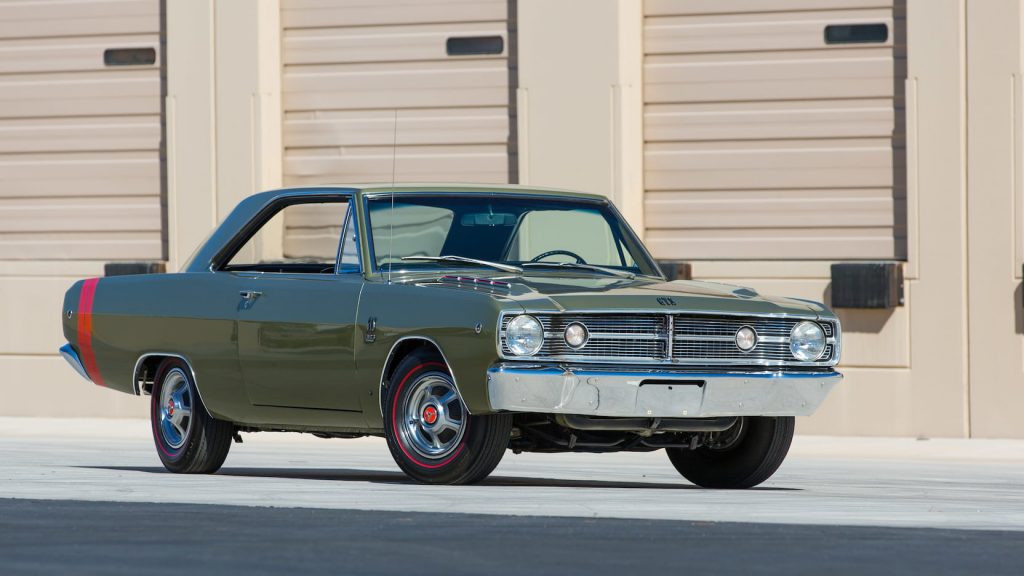
Dodge couldn’t ignore Chevrolet’s success with its compact muscle car, the Nova SS. There were plenty of speed freaks out there, particularly young ones, who were horsepower-hungry. Those youths were in many cases, too, on a budget and couldn’t quite scrape together enough change for the mainstream big and heavy muscle cars of the day. As those mainstream muscle cars attracted punishing premiums from insurance companies, compact muscle cars had the added benefit of flying under the radar and commanding lower rates. Dodge seized that opportunity late in the 1967 model year with a Dart GT Sport (GTS) model. Other than badges on the fender, little distinguishes the 1967 Dart GTS from a normal Dart GT, but under the hood lurks a 383-cu-in V-8.
The GTS, available as a hardtop coupe or a convertible, continued in 1968. The 383 became optional while a 340-cu-in V-8, conservatively rated at 275 hp, became the standard engine. The GTS package also included Rallye suspension and high-flow exhaust, while the 383 model added larger torsion bars, larger anti-roll bar in front, and six-leaf springs in the rear. To fit the 383 in the Dart chassis, the exhaust manifolds had to be modified and while the engine fit (just), there was no room for a power steering pump or air conditioning, so parallel parking a big-block Dart in the summer could be a tiring affair. Concerning the question of 340 vs. 383, the 383 is of course more car and worth more money, but the small-block surprised many a big-block car back in the day. Because the 383 is considerably heavier than the 340, it isn’t much quicker. A 340 car is also more balanced.
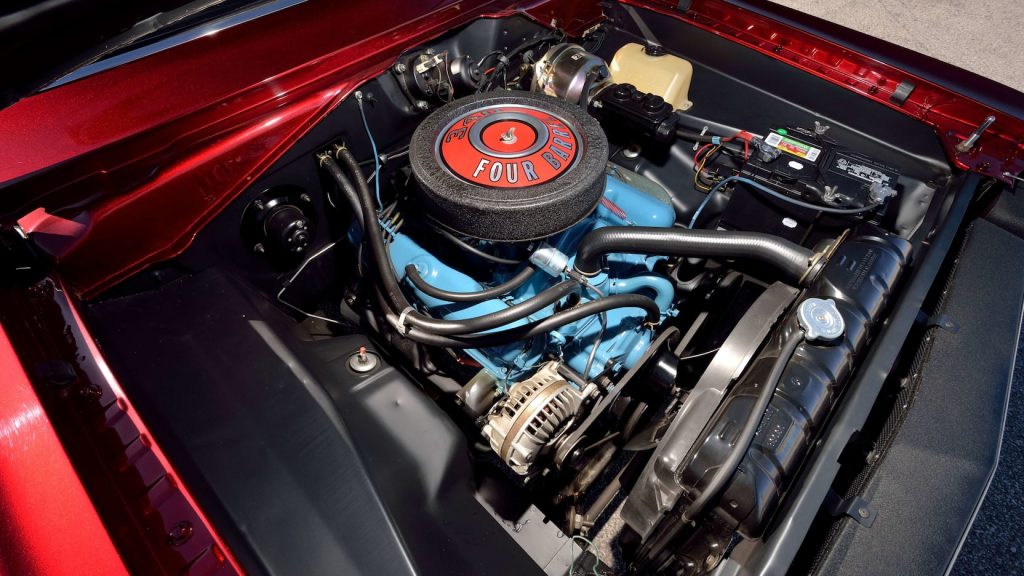
A small number of Darts went even bigger with a 440-cu-in V-8, sandwiched under the hood by the folks at Hurst, rated at 375 hp and 480 lb-ft of torque. In 1968, legendary dealer Grand Spaulding Auto Sales in Chicago sold a few dozen of its own 440-powered Darts, dubbed the GSS (Grand Spaulding Special) with the 383 badges left alone. The GSS, numbering just 50 original examples, is highly sought after by Mopar collectors.
Rare Darts with big grunt
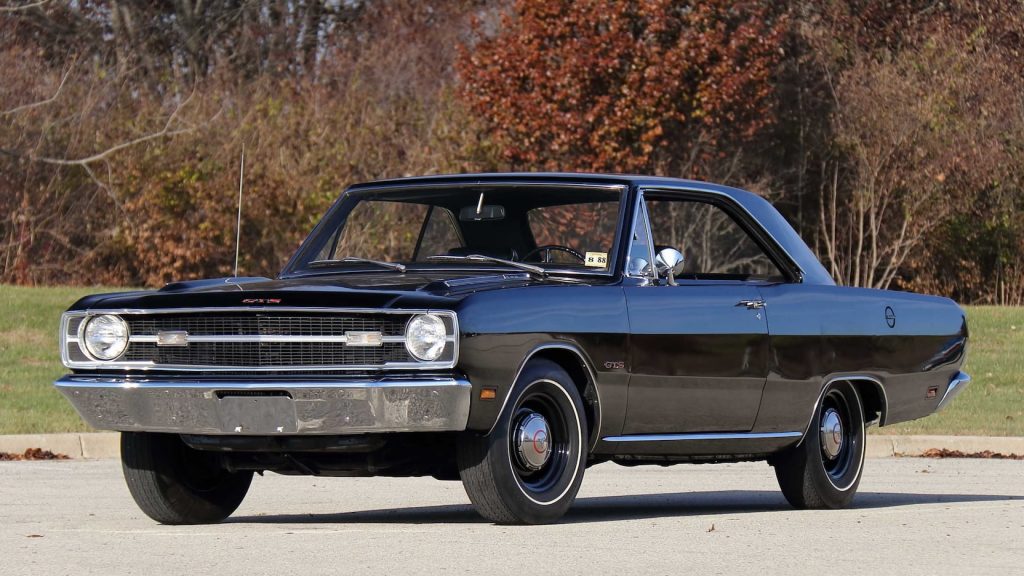
The following year, in 1969, Dodge sold an M-code 440-powered Dart (hardtop only). Intended for drag racing and not even covered by the factory warranty, 440 Darts were only available with a three-speed TorqueFlite automatic and, alarmingly, four-wheel drum brakes. (Going was clearly a greater priority than stopping.) A Sure Grip diff was standard, with either 3.55 or 3.91 gearing available. Right out of the box, they were good for quarter-mile times in the mid-13s and light tuning could knock off even more time. About 650 Darts got the 440 engine in 1968–69. For reference, Dodge sold nearly 200,000 Darts in 1969 alone.
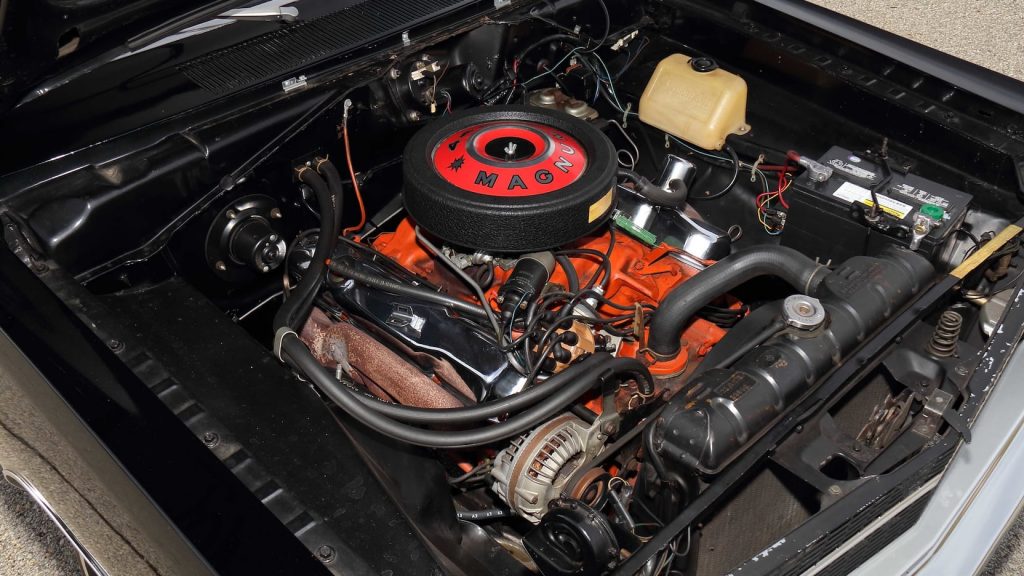
Even more hardcore were the Hemi Darts built for NHRA Super Stock drag racing. Hemi Darts got an extensive lightweight treatment and of course a great big thumping 426 Hemi. Hemi Darts could hit 10s in the quarter-mile, and with only about 80 built, they hardly ever pop up for sale.
Into the Swinger of things
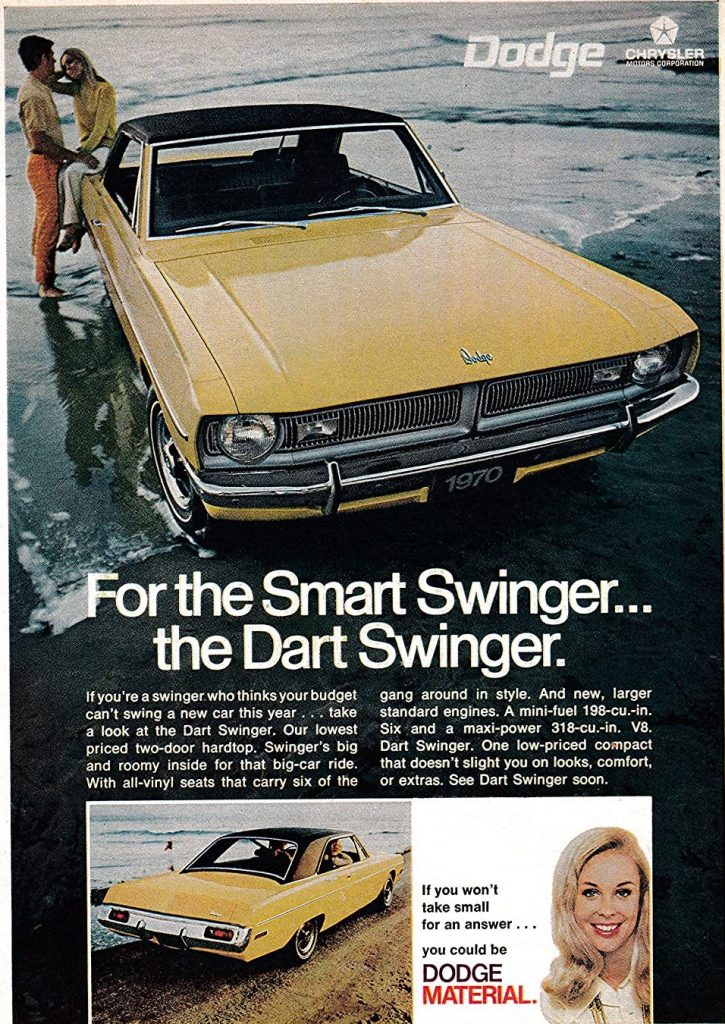
The last year for the slow-selling GTS was 1969, when the Dart lineup also added the Swinger 340, which included Hurst four-speed, Rallye suspension, bumble bee stripes and 14-inch wheels. Dodge, always playing up the Dart’s performance value, boasted in one ad “For the Smart Swinger…the Dart Swinger” and “If you’re a swinger who thinks your budget can’t swing a new car this year…take a look at the new Dart Swinger.” But before we start making spouse-swapping jokes, let’s remember that Merriam-Webster also defines a swinger as “a person who is lively, exciting, and fashionable.” Uh-huh.
For 1970, there was no more 383 in the Dart and the Swinger 340 became the sportiest version available. It remained popular, though, even amidst the introduction of the Challenger that year, and it still escaped the high insurance rates hammering other muscle cars. Meanwhile, over at Plymouth, the A-body Duster was selling well and Dodge got its own version for 1971, called the Demon. (Legend has it that the original name for the Demon was the Dart Beaver, but … someone thought better of that moniker.) The Demon 340 replaced the Swinger 340 as the sporty Dart that year, and it distinguished itself with a dual-scoop matte black hood, hood pins, rear spoiler and a neat little devil badge on the tail.
Again, Dodge played up the Dart’s value proposition. One ad called it a “nice little piece of news for people who are fiendish about saving” and proclaimed that “when it comes to gas economy, Demon is a regular saint.” Unfortunately, the little devil badge got banished in 1972 and horsepower was down in the Demon 340, while the hood scoop was revised.

The beginning of the end
After 1972, the story starts to sound familiar to anybody who’s read anything about muscle cars. Tighter emissions rules strangled performance and higher insurance rates hit muscle cars hard. Mopar’s muscle dwindled each year. For 1973, Dodge dropped the Demon model and gave its performance Dart a more vanilla, church-friendly name—the Dart 340 Sport. Rated at 240 net hp, the 340 Sport was the hottest in the lineup that year, while the Swinger lost some of its virility and made do with a 150-hp 318. The following year saw a little more displacement in the 1974 360 Sport, with 245 hp. But even though the high-horsepower days were gone, Chrysler was better than anybody at turning heads with loud colors and graphics, so Dodge spiced things up with the 1974-75 Dart “Hang Ten.” Named after the surfwear company, it featured Eggshell White paint, special stripes on the hood, and pinstripes down the body sides ending in graphics of a surfer catching a wave on the tail. On the inside, fold-down rear seats with room for a surfboard, bright multi-colored bucket seats, and orange shag carpeting. Does it get more ‘70s than orange shag carpeting? (No, it does not, unless the exterior is brown.)
For 1976, Dodge (and just about every other OEM) capitalized on America’s bicentennial as a marketing opportunity. The Dart “Spirit of ‘76” also features white paint, and running down the body sides is the added Uncle-Sam-approved touch of pinstripes in red, then blue that end in the profile of an eagle. “Spirit of ‘76” decals call out from between the door and the rear wheel.
Aside from some fun decals and bright colors, things didn’t get any more interesting for the Disco-era Dart. Sales for 1976 fell to their lowest in years, and the following year the F-body Dodge Aspen took up the Chrysler compact mantle. Although the Dart name lived on in Mexico and South America for a few more years, the Dart as we know and love it here in the States was gone.
The Dart market

The Dart’s speed and fun-factor per dollar has always been its selling point, and that’s true right up to today’s market, at least relative to other classic muscle cars. (The recent front-drive Dart compact was affordable, yes, but entertaining as Grape Nuts for breakfast.) Classic Dart values have been mostly steady in recent memory. They dipped slightly during the 2008–09 recession, but those drops were nowhere near as steep as other muscle car favorites like Hemi Cudas or GTO Judges. Dart prices have crept up over the past couple of years but, again, the changes have been small and they’re still enticing to muscle car fans with a spending limit.
No surprise here, it’s the rare high-performance cars with the big engines and high horsepower that are worth the most. The holy grail of Darts is of course the ultra-rare Hemi Dart, and the few that have come to market have sold for well into six-figure territory. The current world record price for a Dart is $330,000 for a highly original Hemi Super Stock drag car, while another Hemi Dart sold for $159,500 in Kissimmee two years ago.
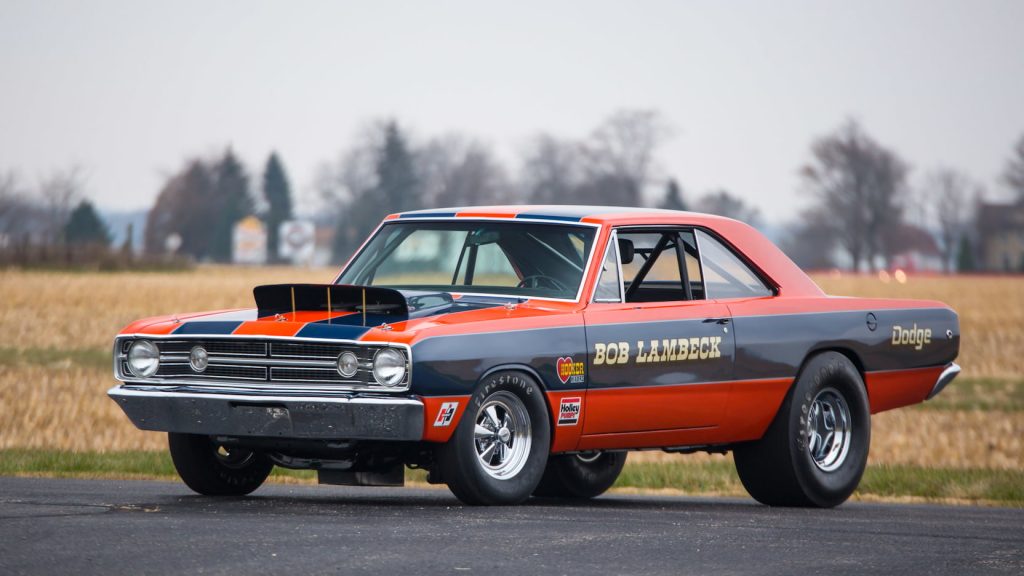
The next step down on the ladder are the 1968 440/375-hp Dart GSS, with values ranging from $102,000 for a car in #4 (Fair) condition to $167,000 for a perfect #1 (concours) example. The 1969, factory big-block GTS is more attainable, ranging from $33,800 in #4 condition to $91,300 in #1 condition. The 340- and 383-powered GTS hardtops, meanwhile, range from the mid-teens to the high-20s in #4 condition and from the high-30s to the mid-50s in #1 condition. Convertible GTSs are, naturally worth, even more.
Moving into the 1970s, Darts get significantly more affordable, even for still-hot models like the 1970 Swinger 340 (#2 value of $33,700), 1971 Demon 340 (#2 value of $33,500), and 1972 Demon 340 (#2 value of $25,500). From 1973 on, Darts get downright cheap, and even perfect ones don’t stretch past 20 grand.
Whether it’s one of the terrifyingly fast, hard-to-find big-block Darts or the decal-laden Darts of the ‘70s, these cars are overall affordable and endlessly customizable. For those who like to wrench, there are several avenues improving performance without breaking the bank.

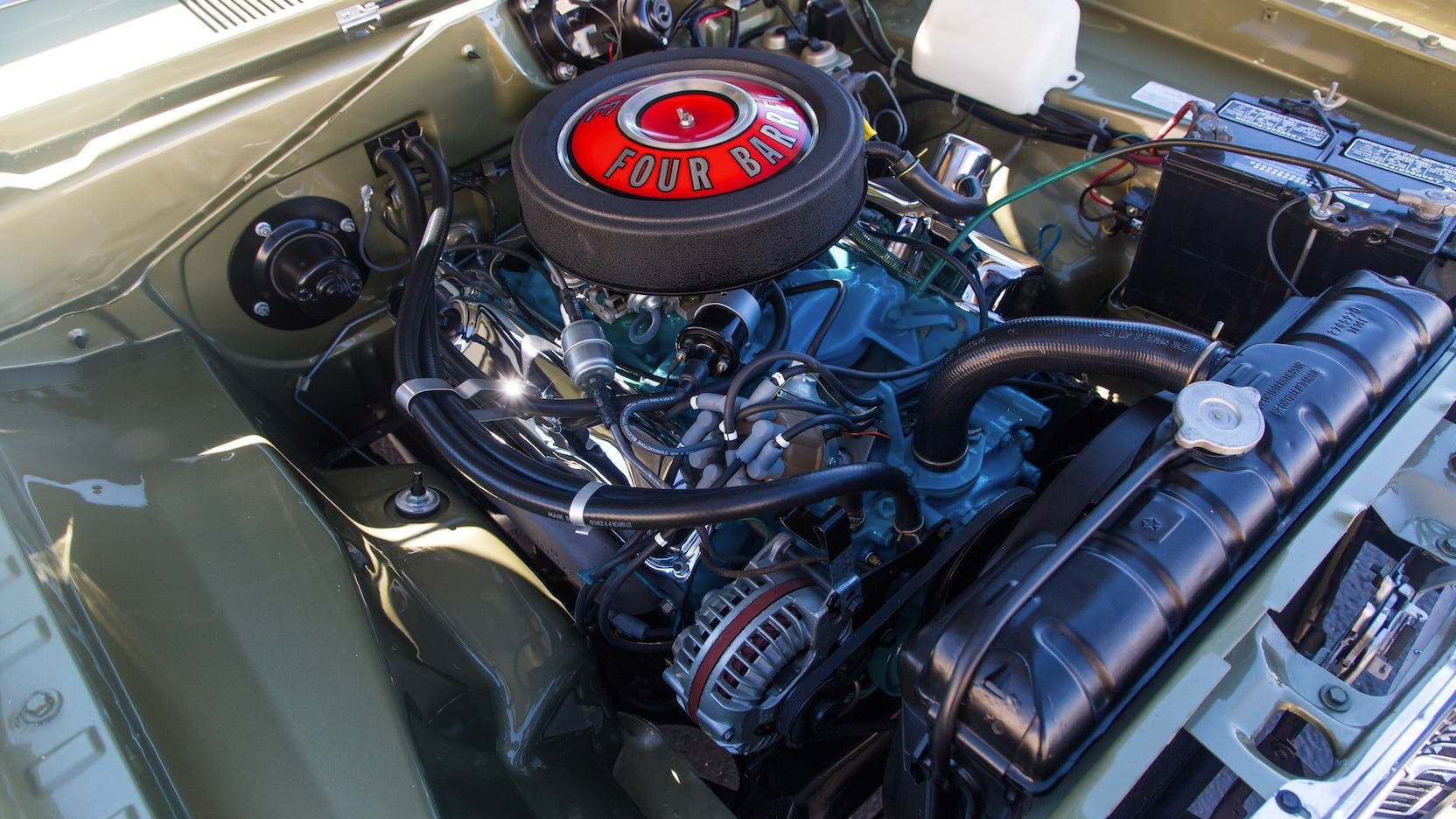
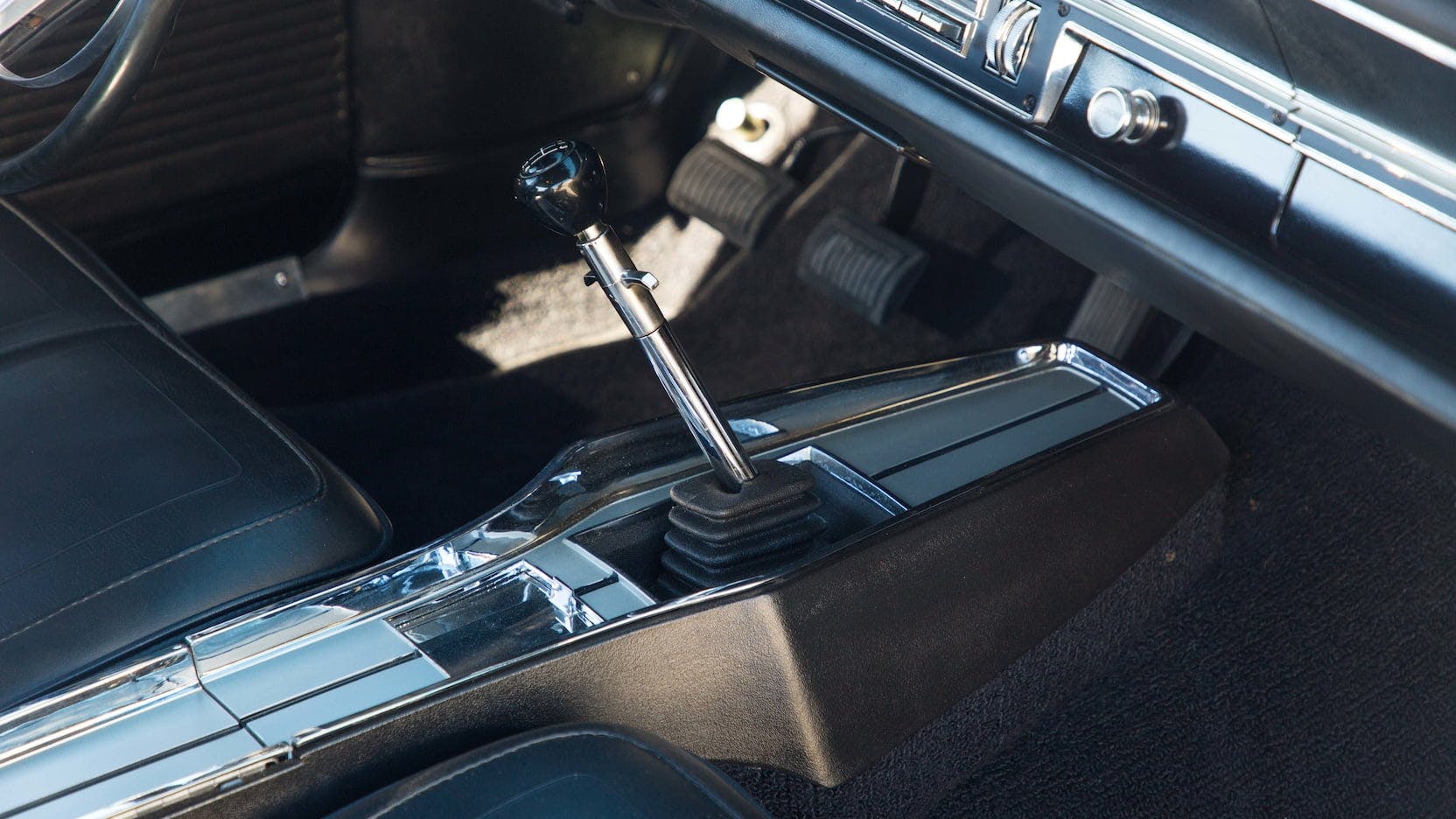
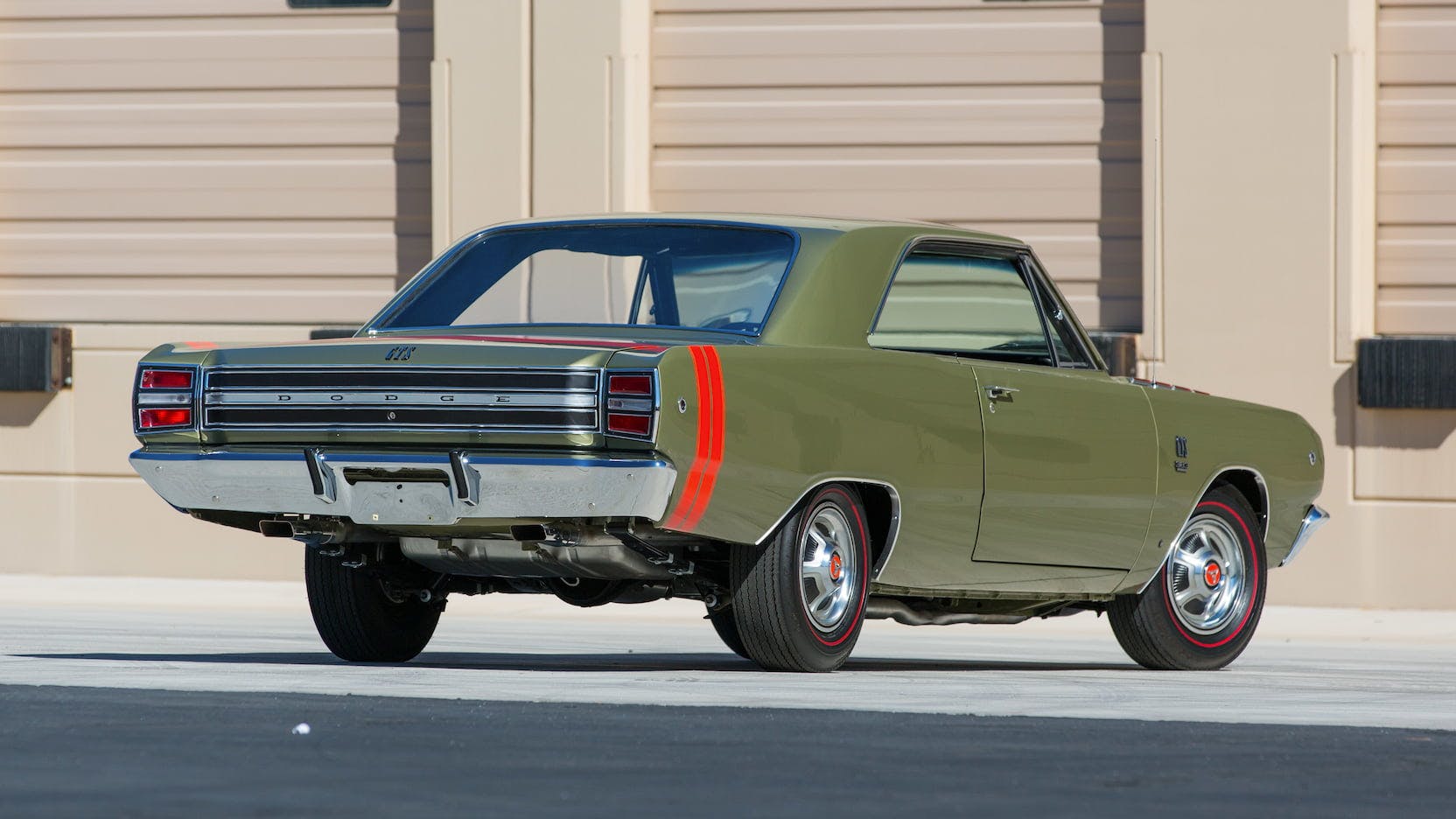
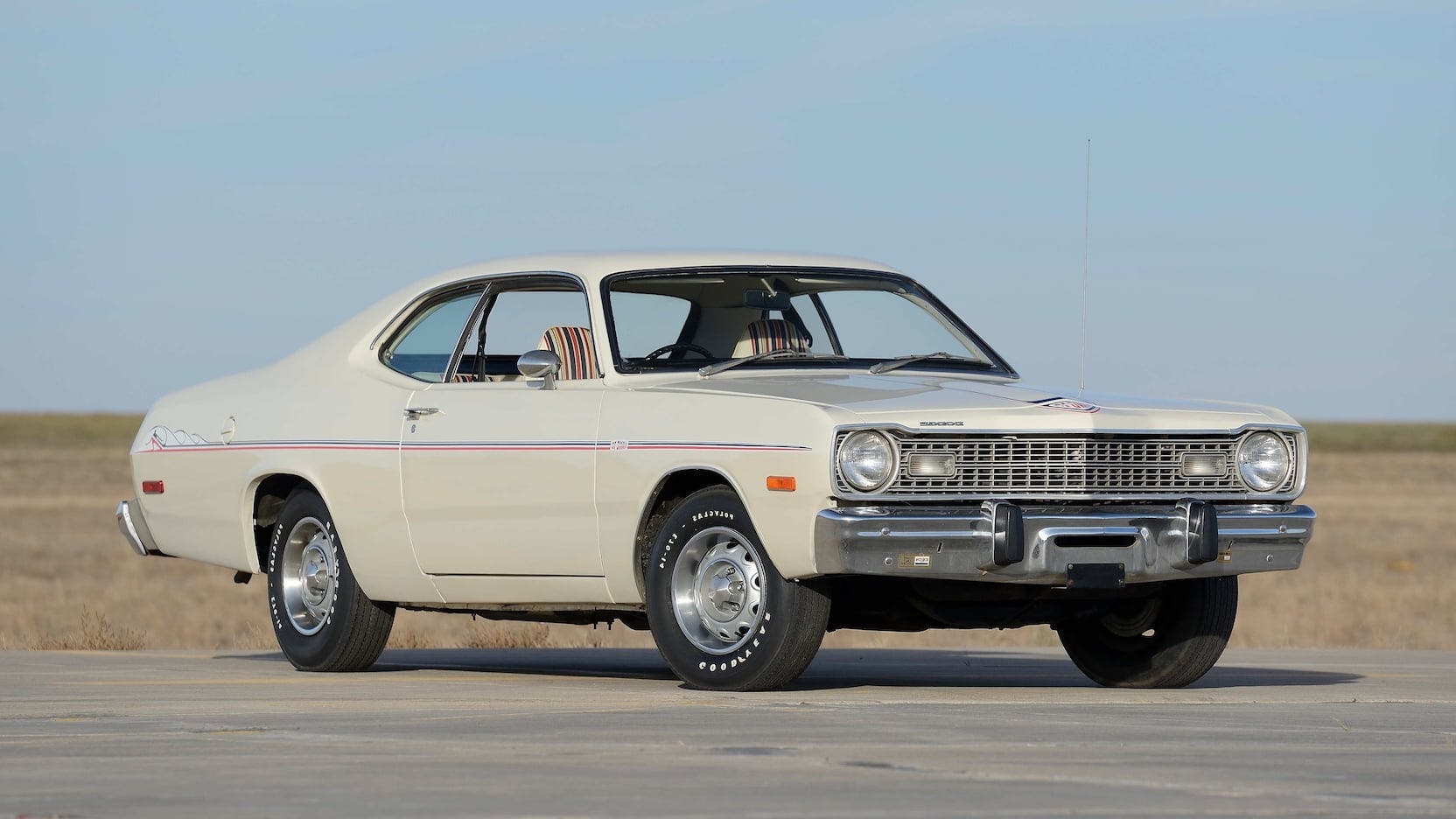
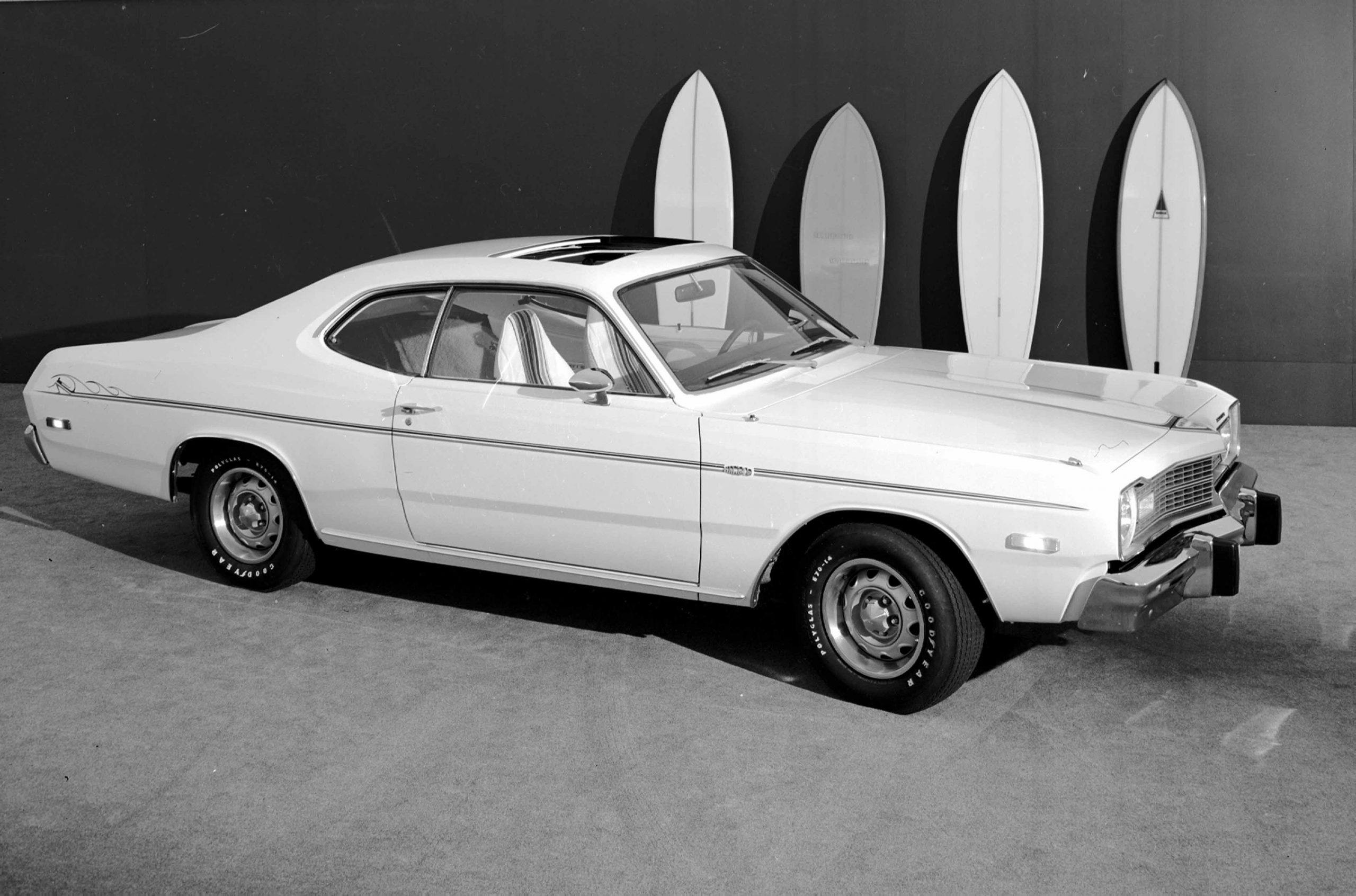
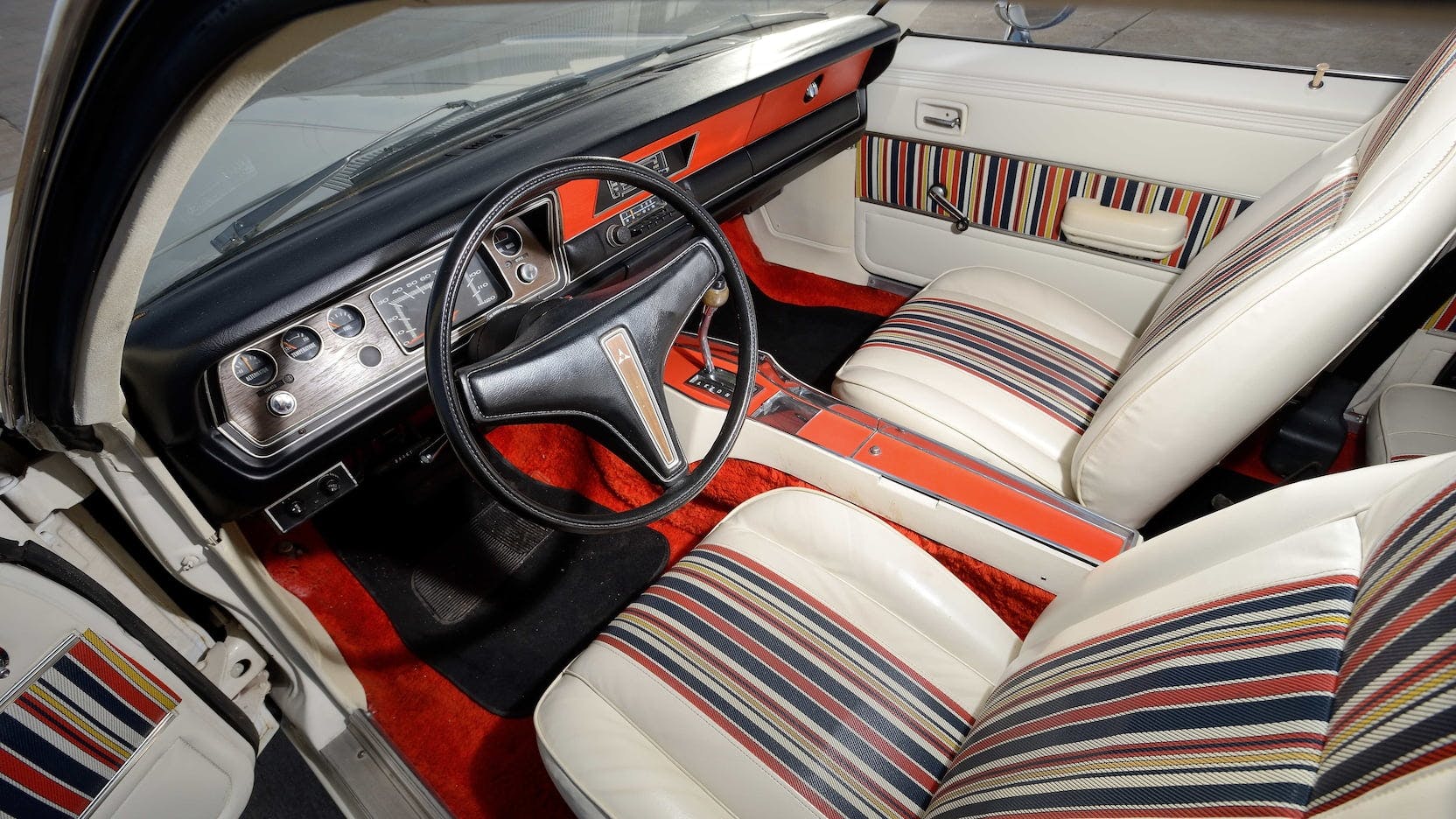
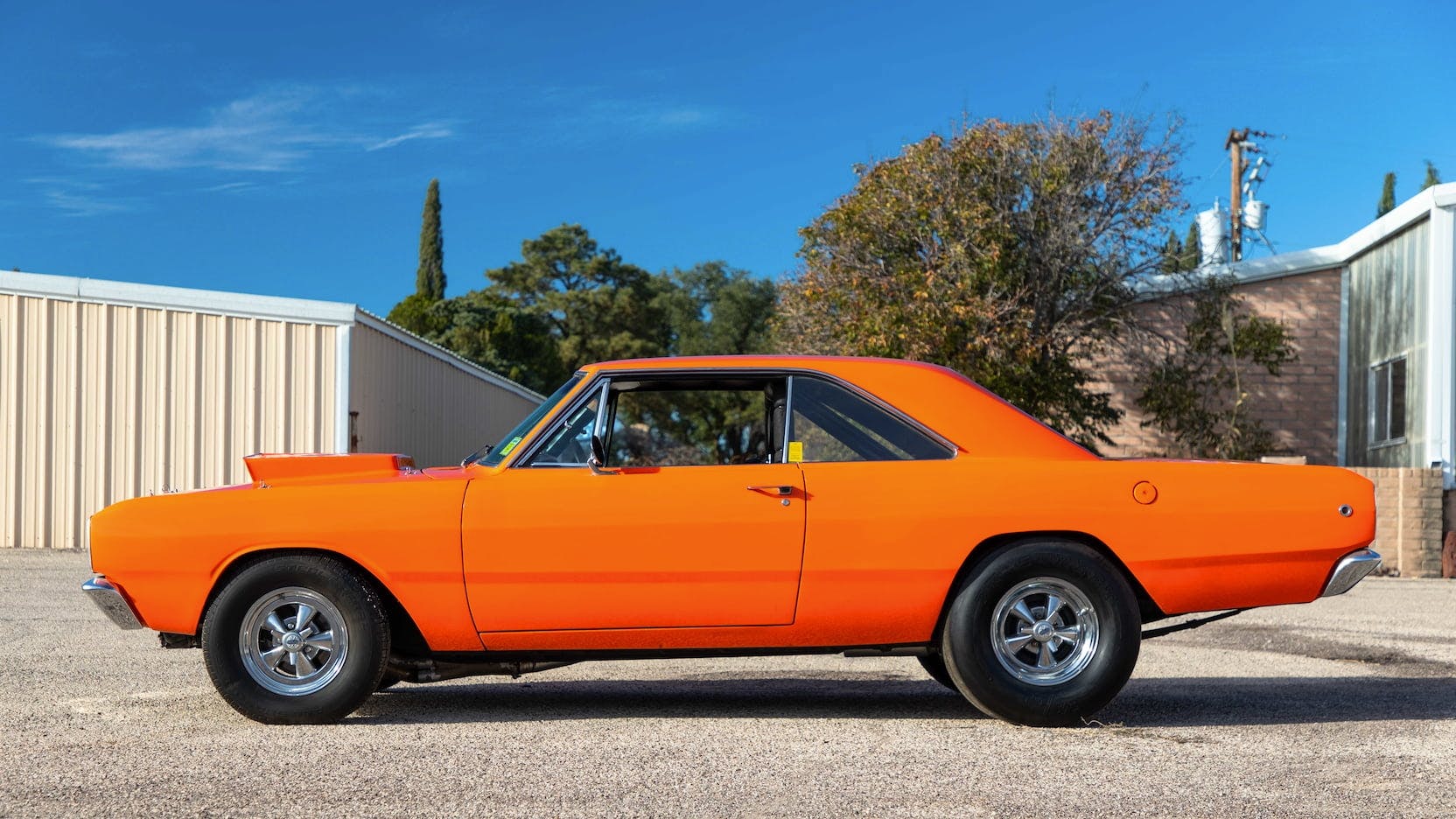
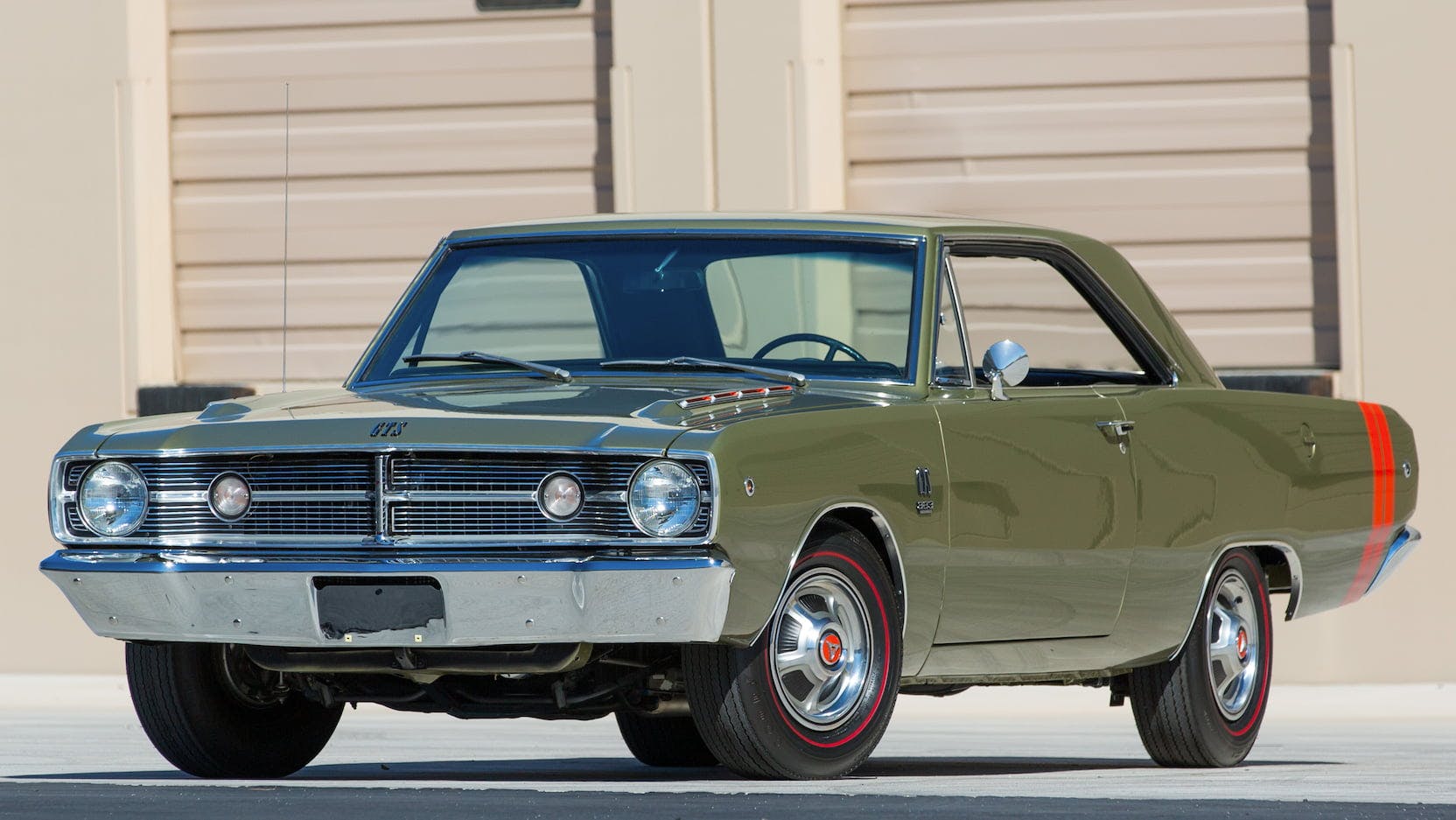
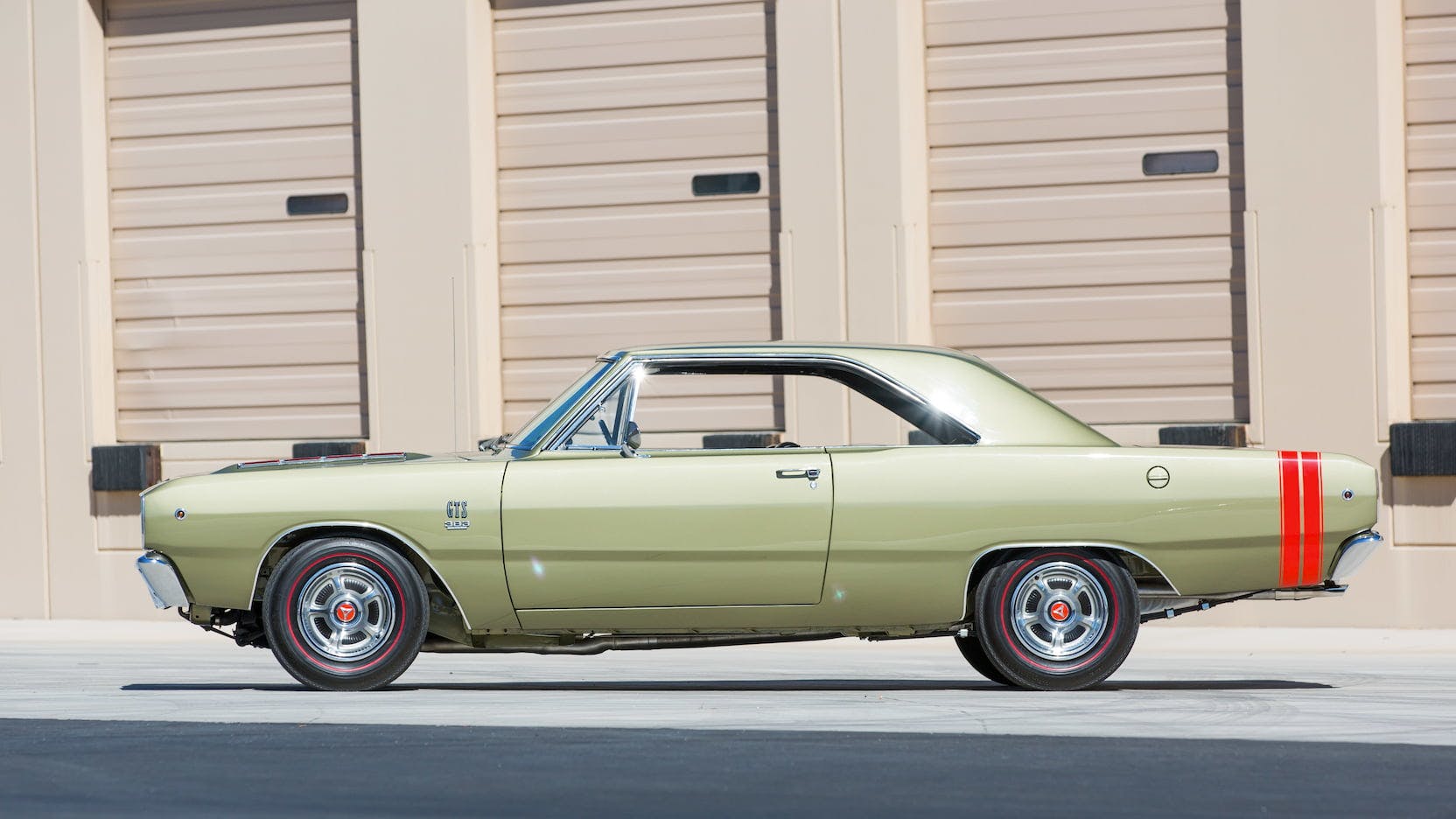
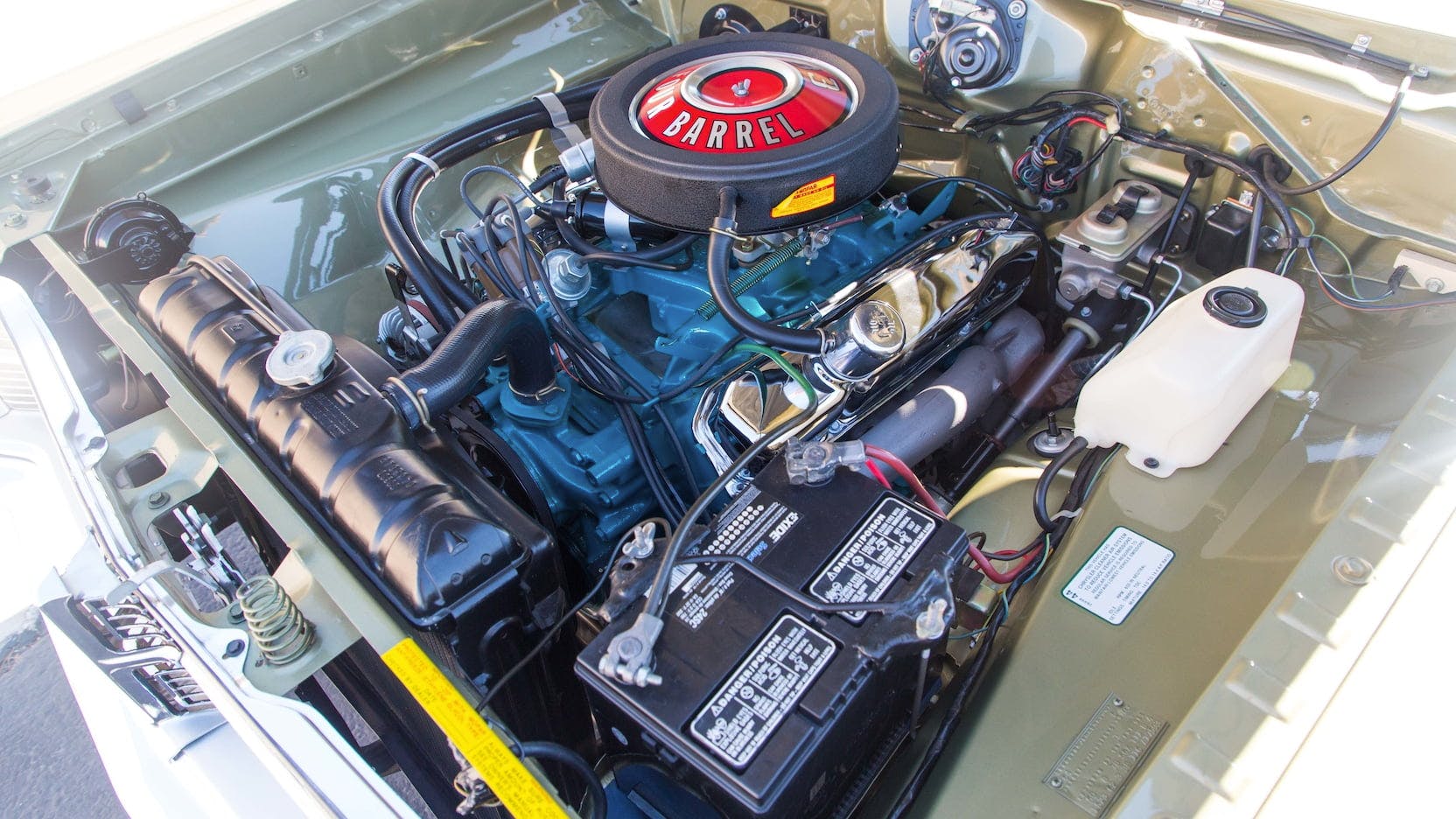
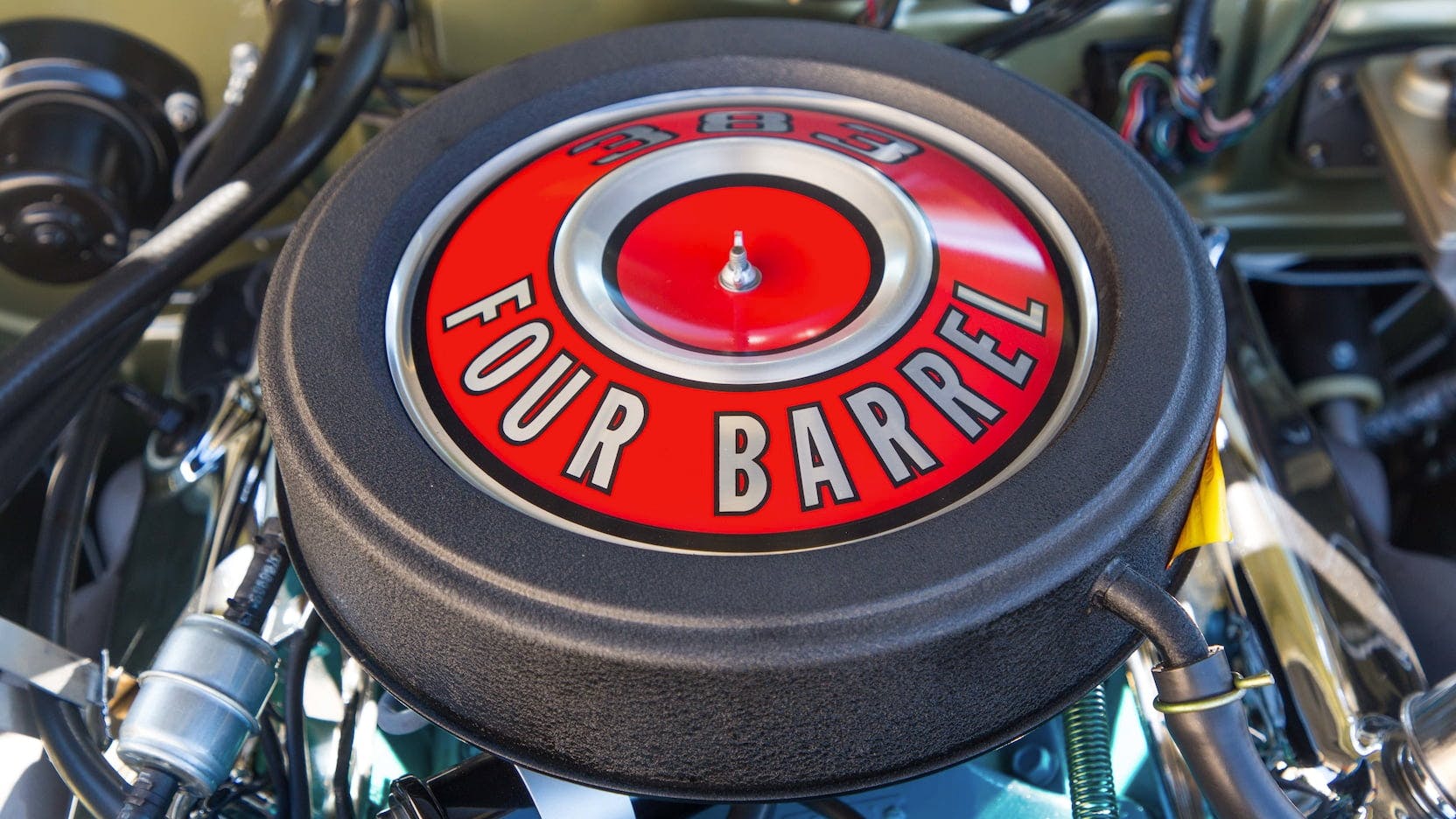
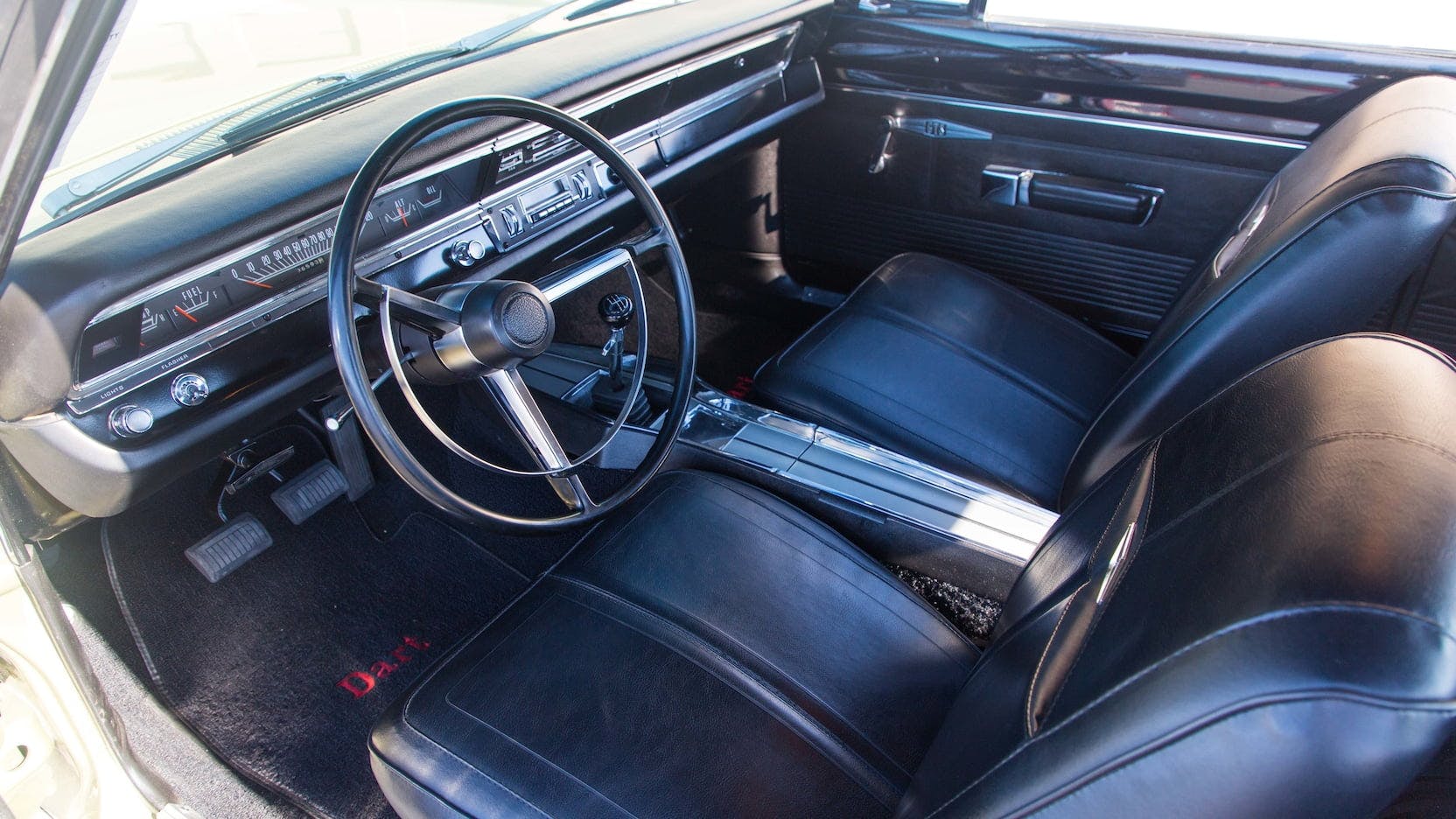
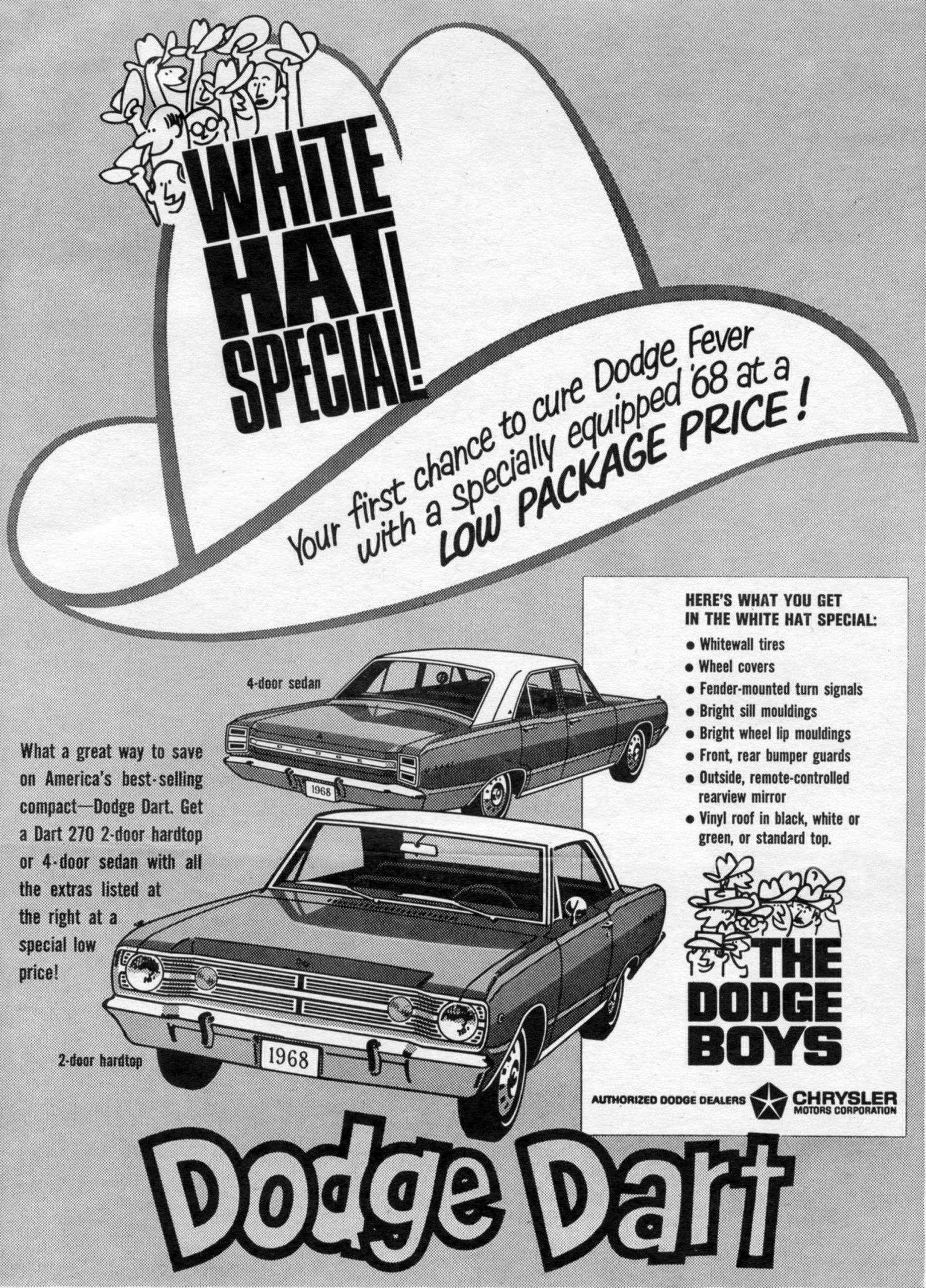
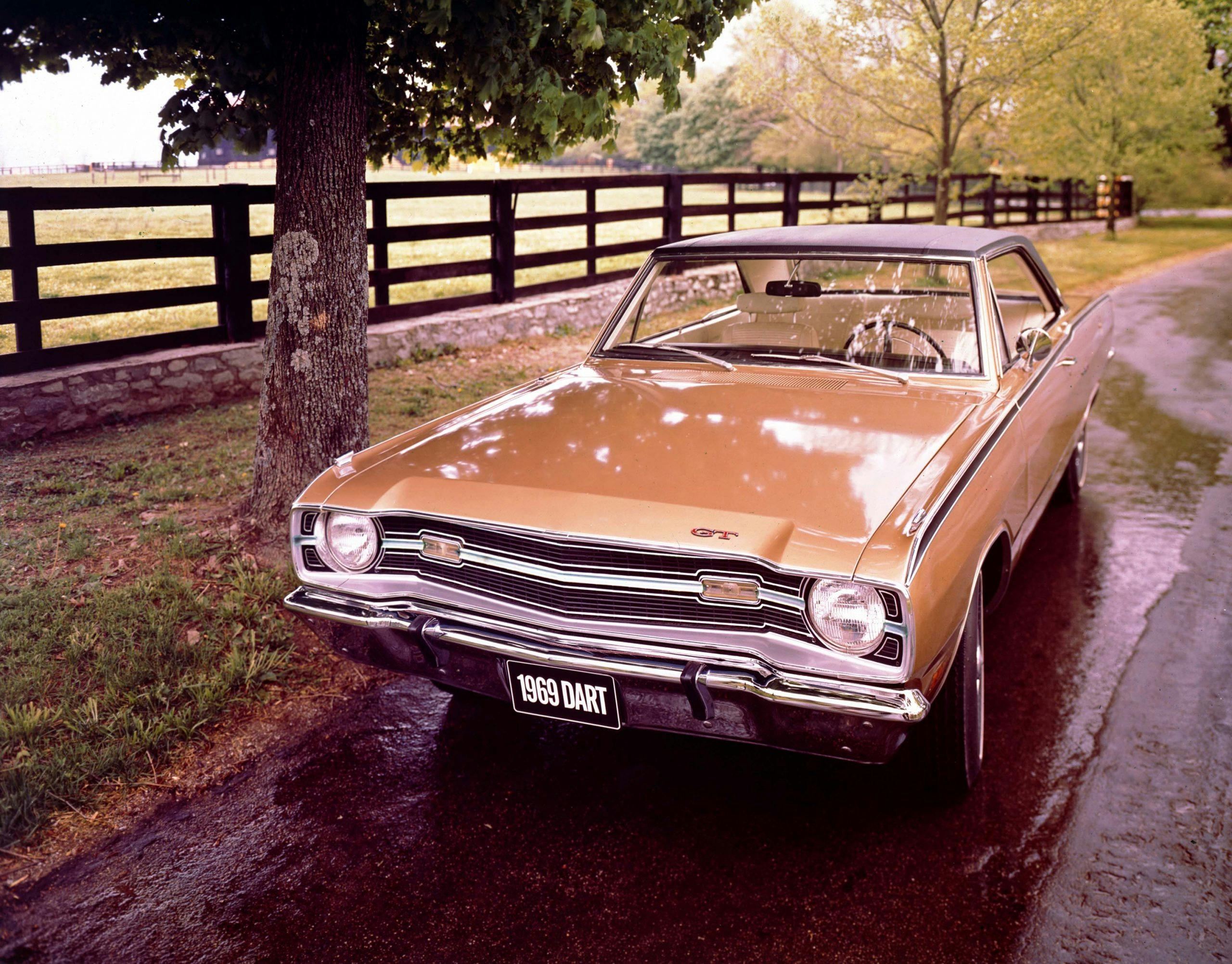
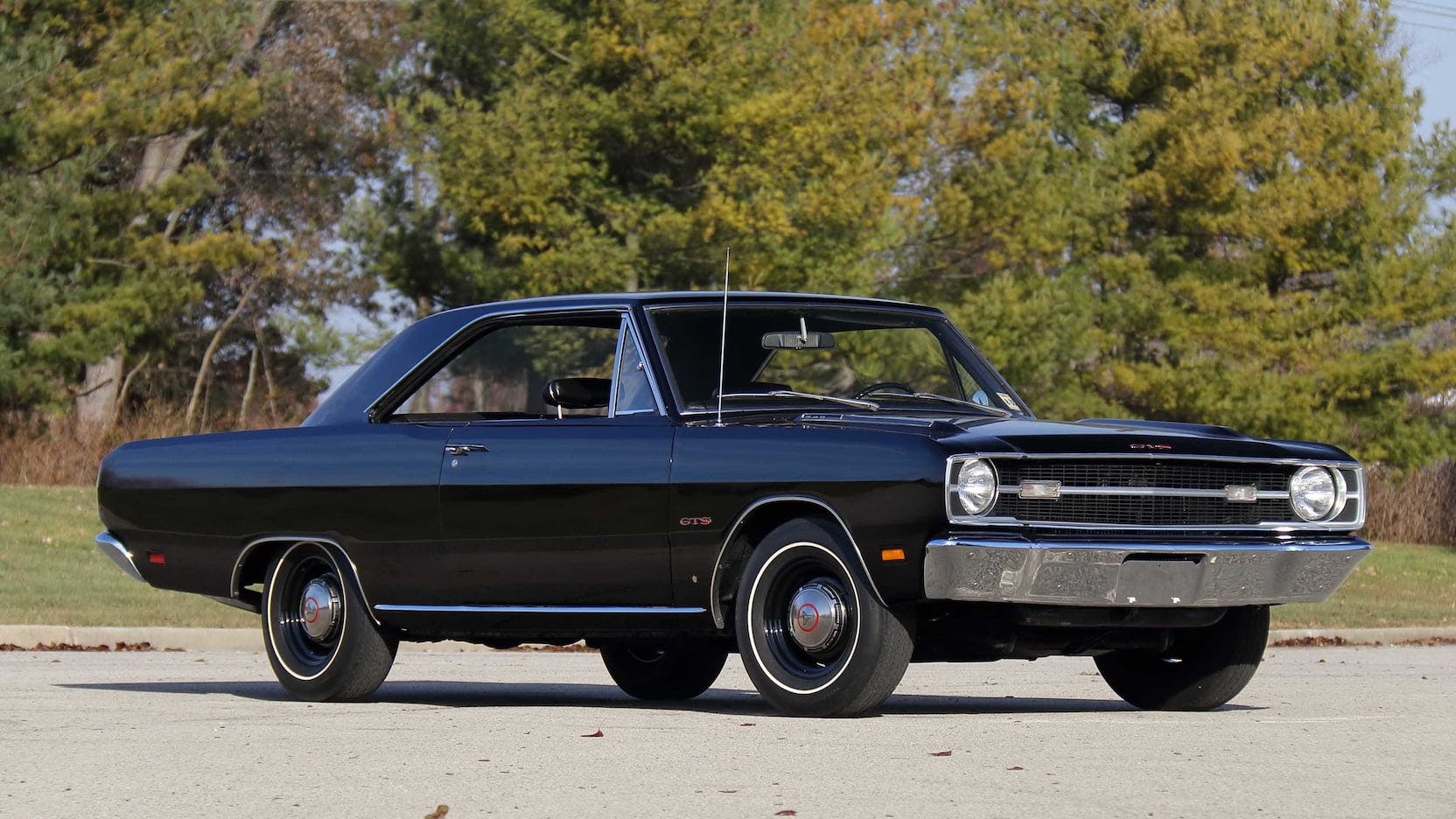
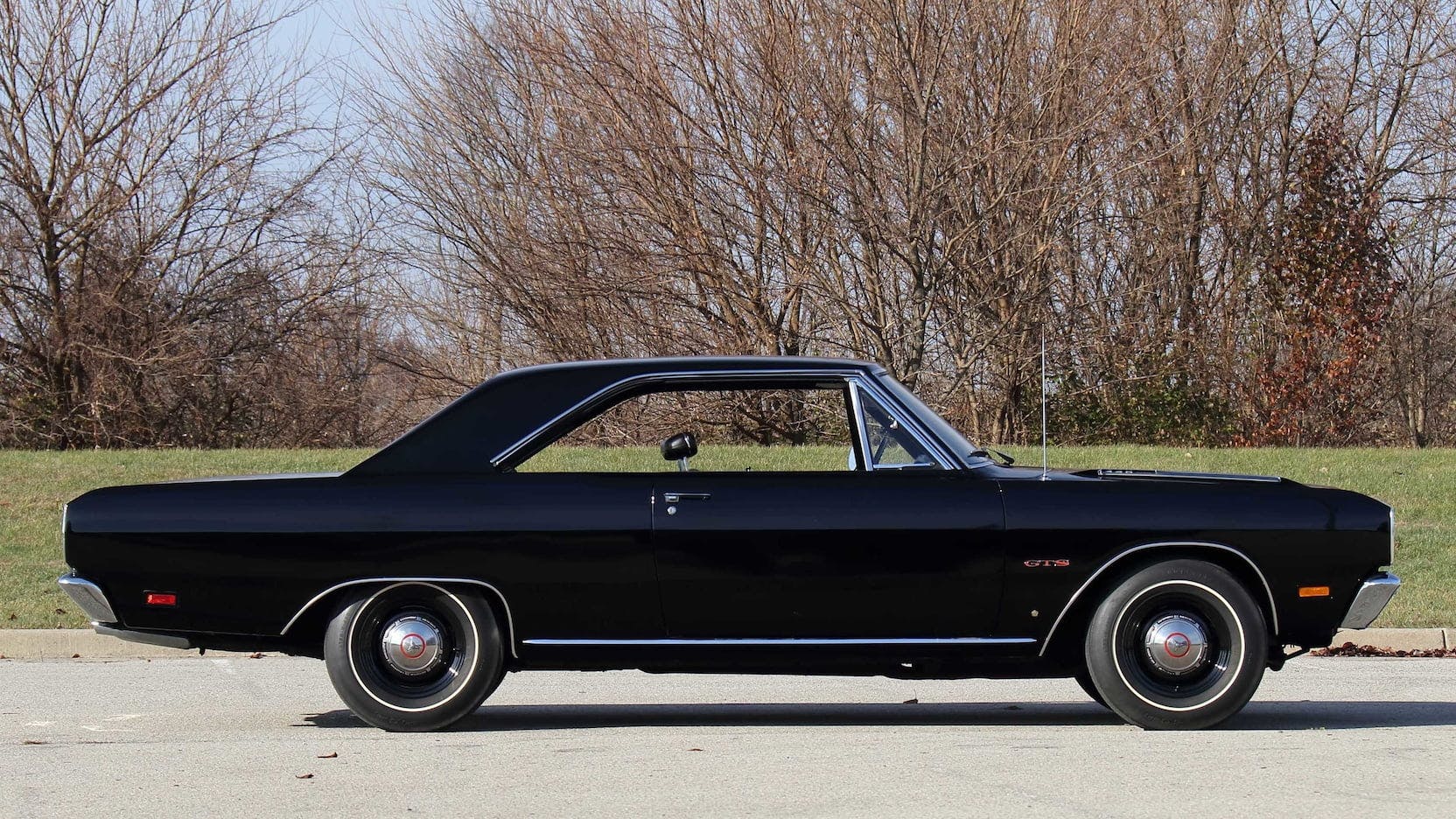
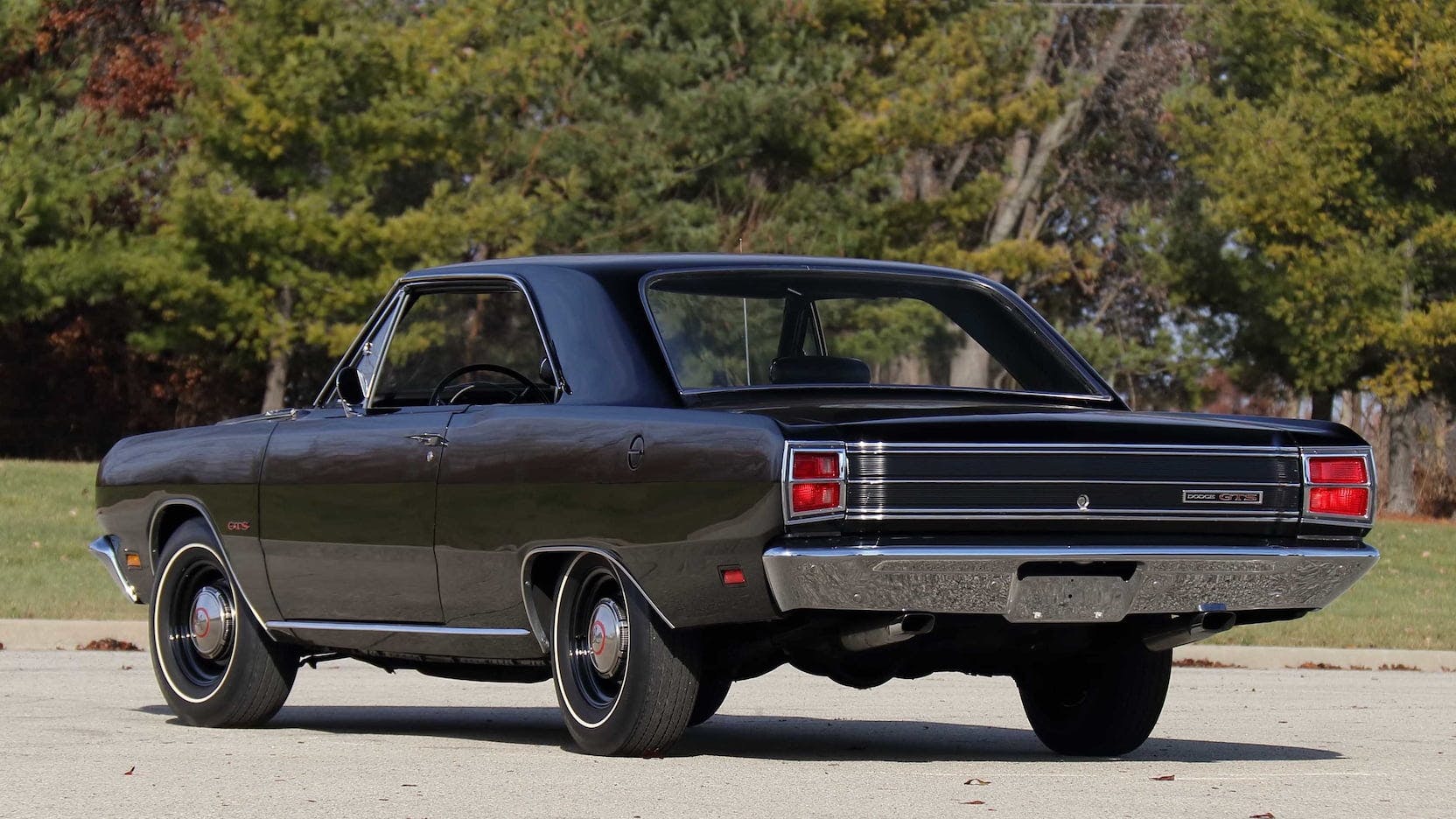
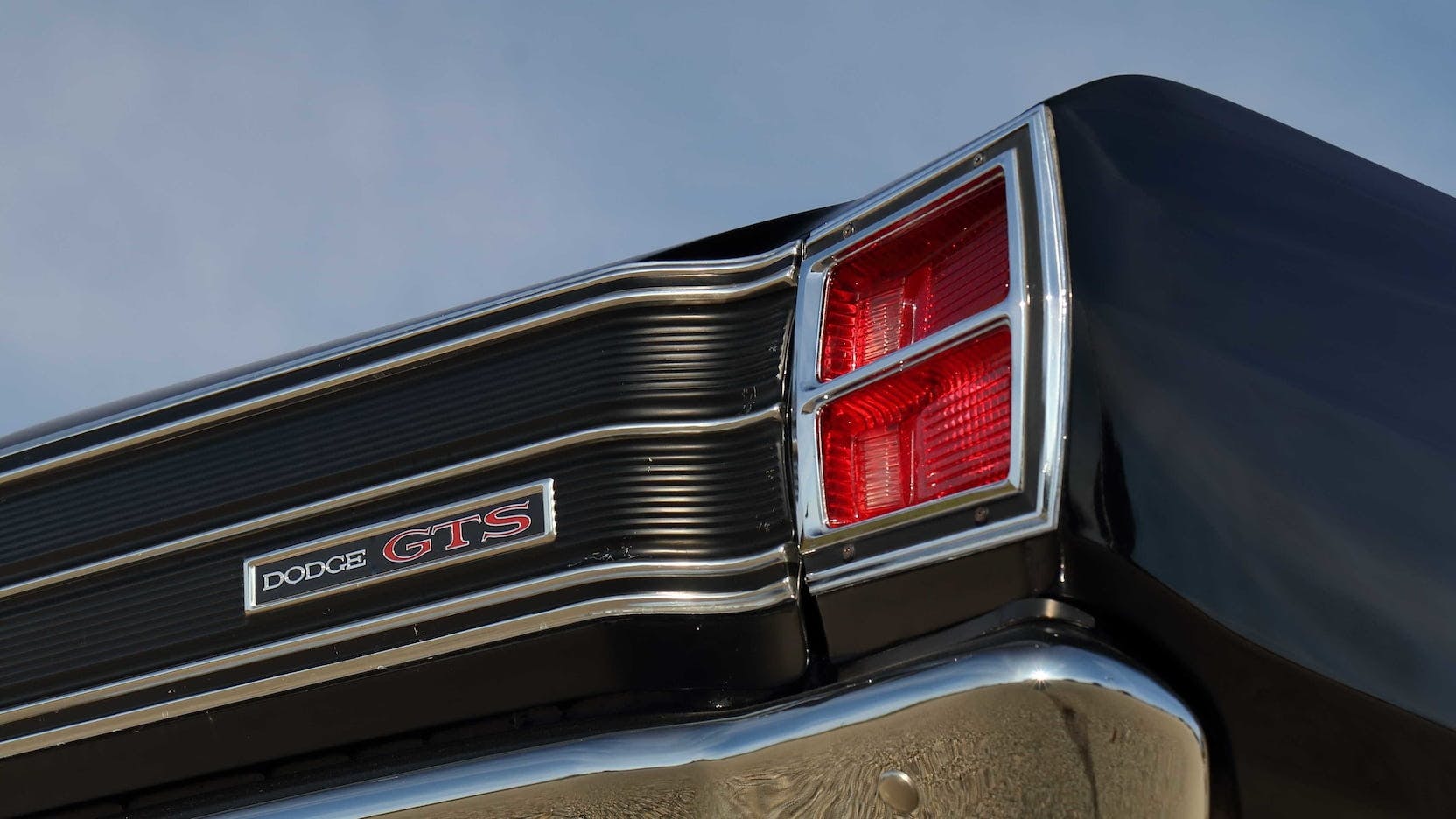
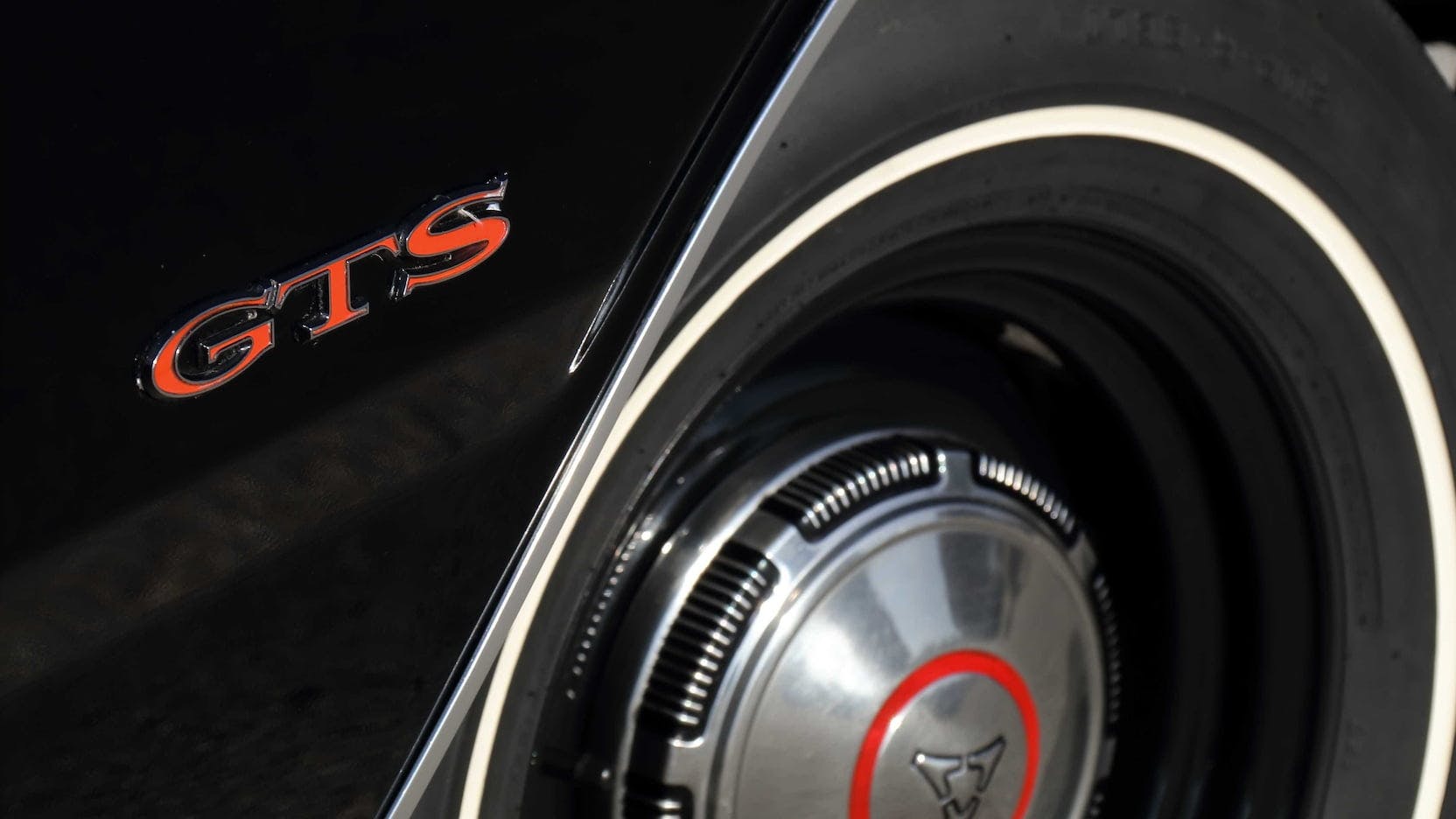
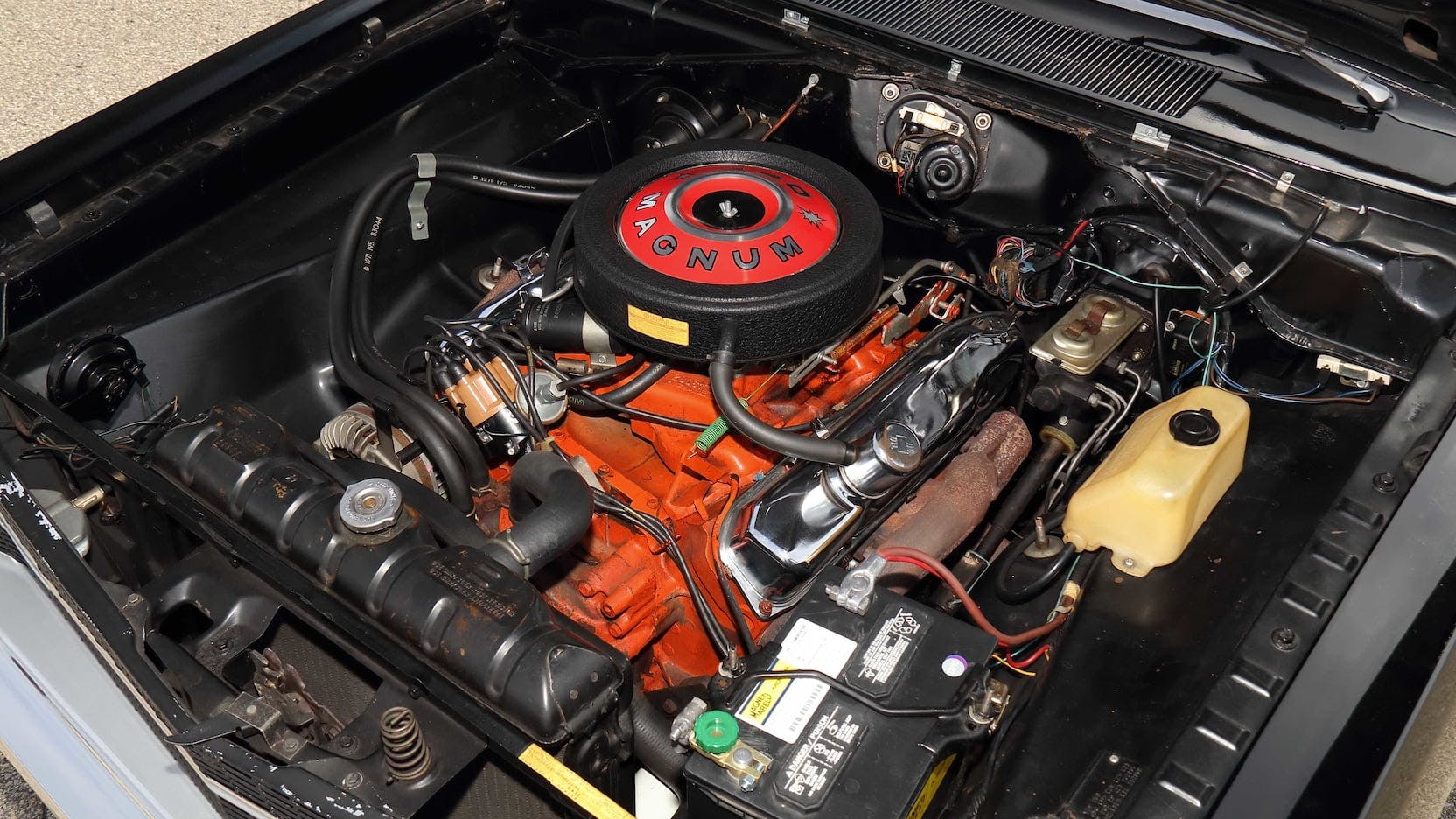
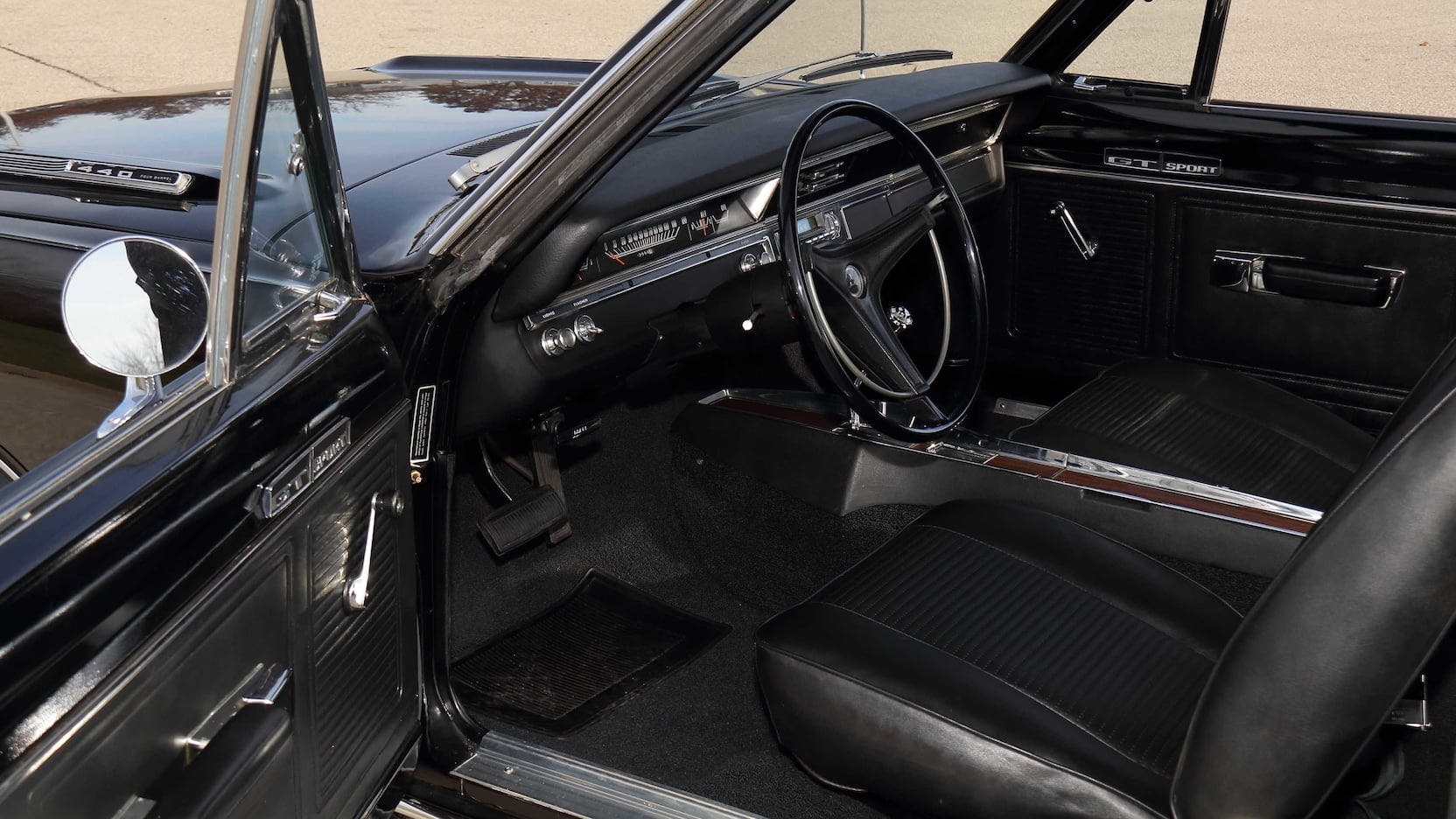
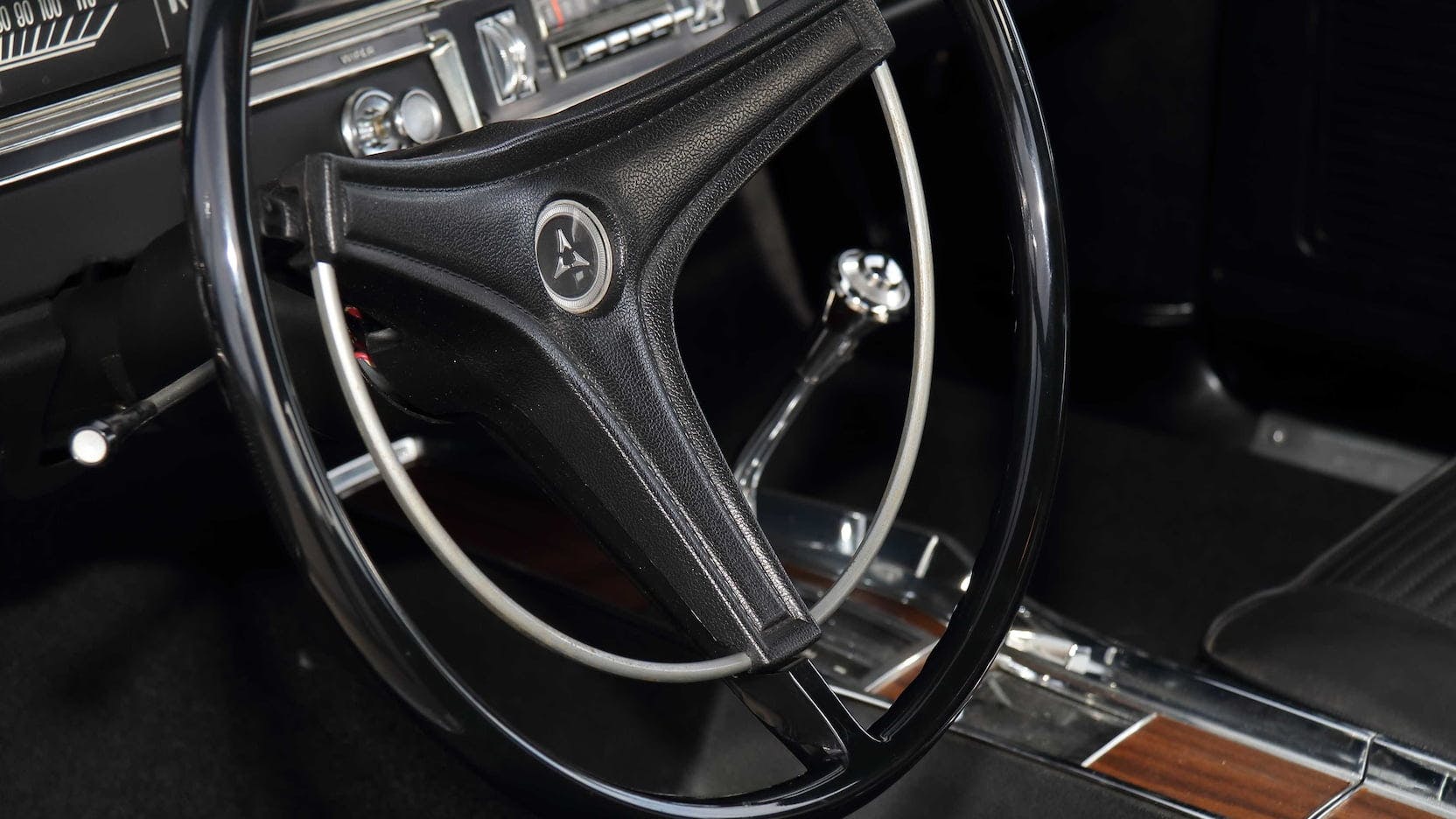
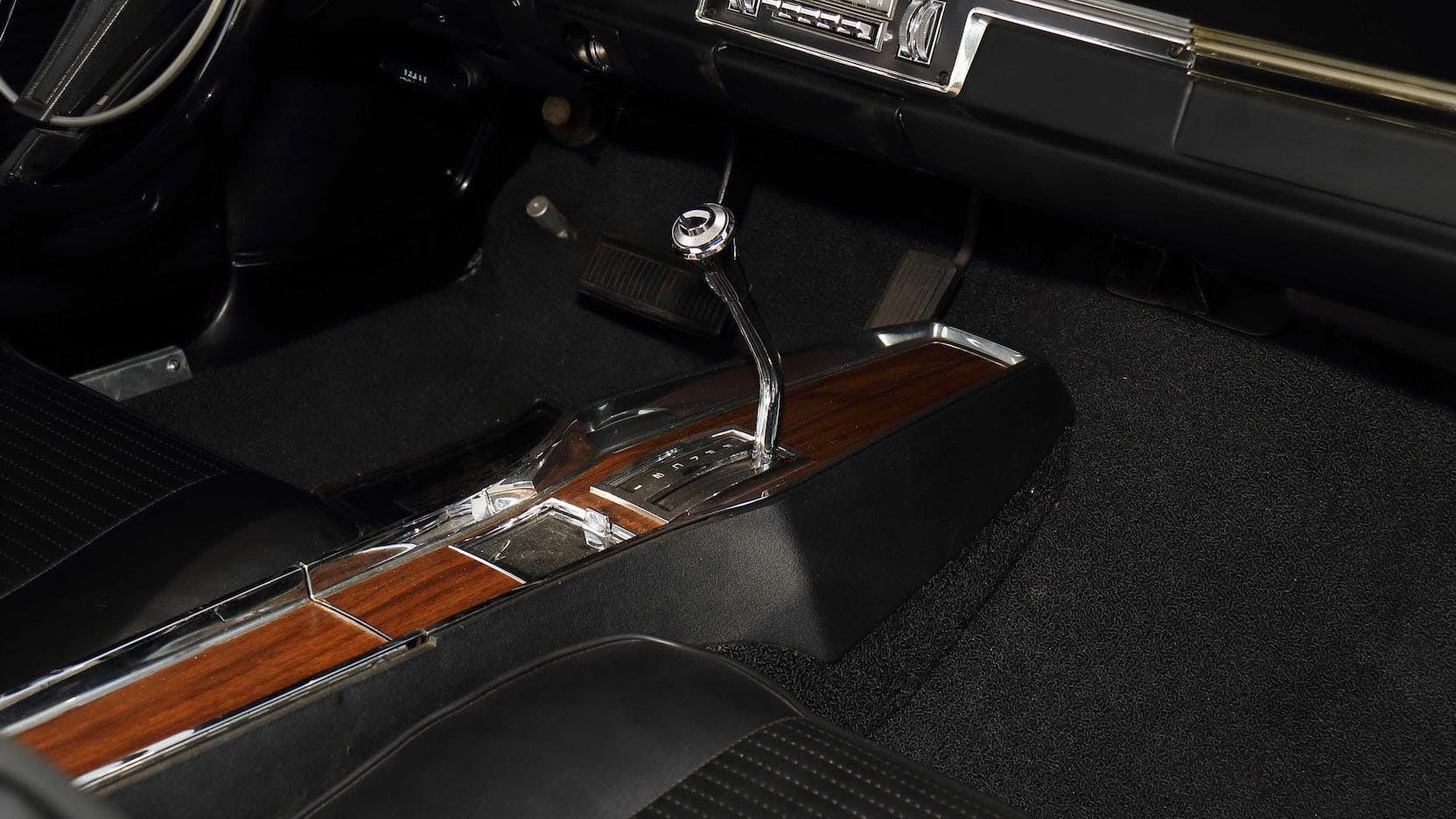
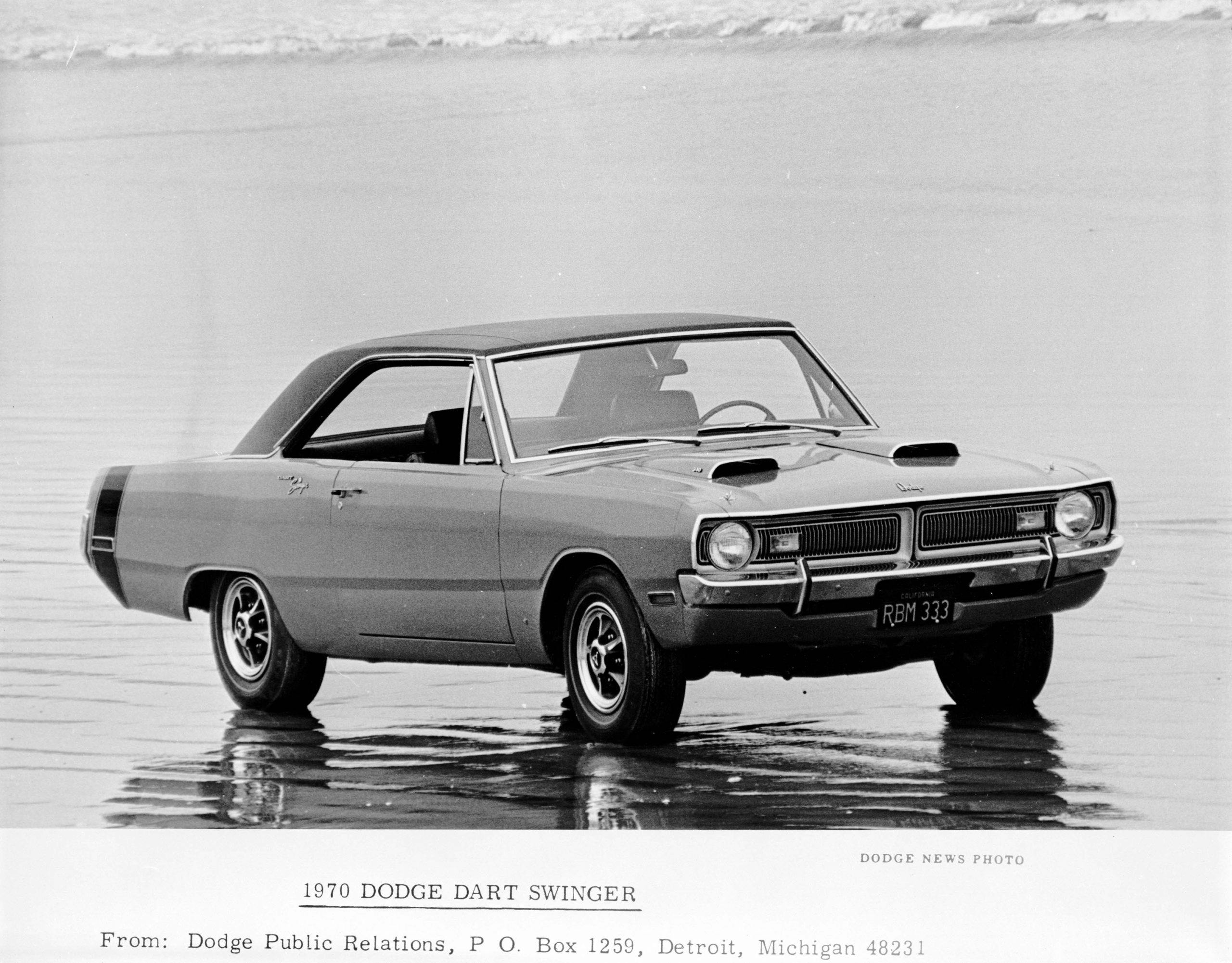
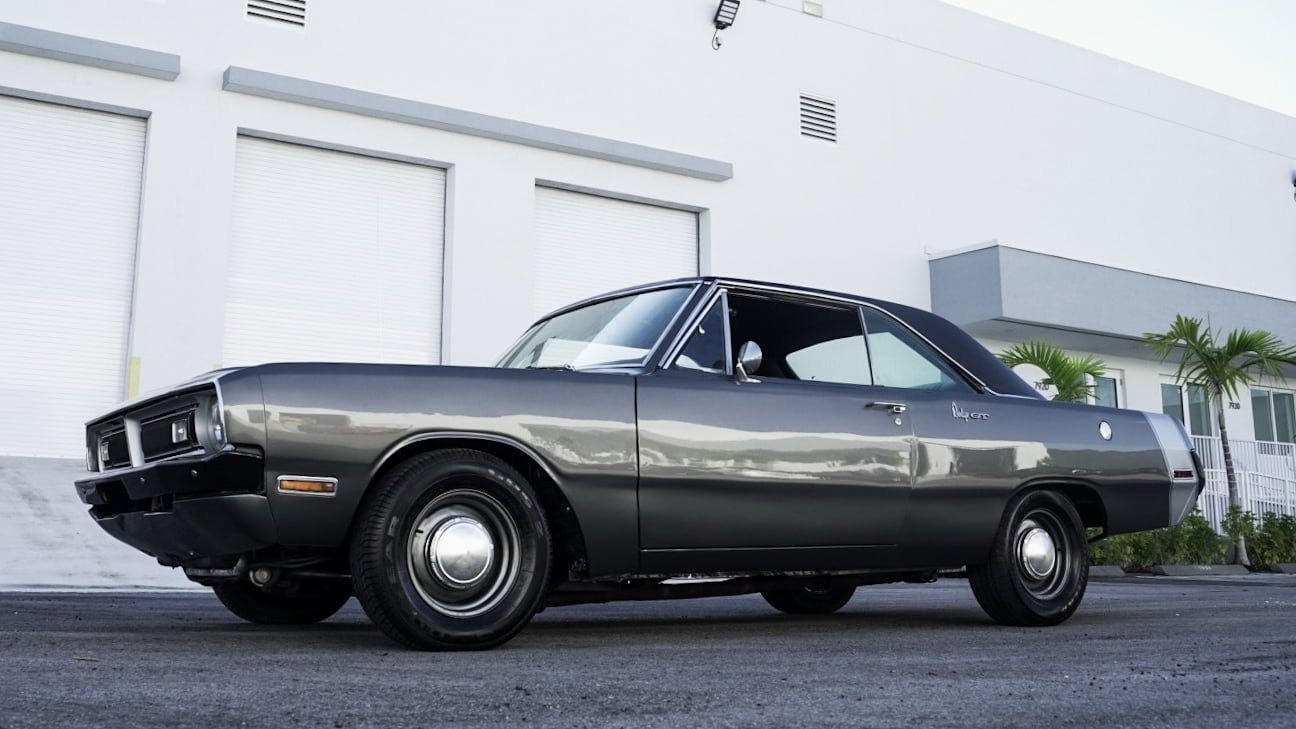

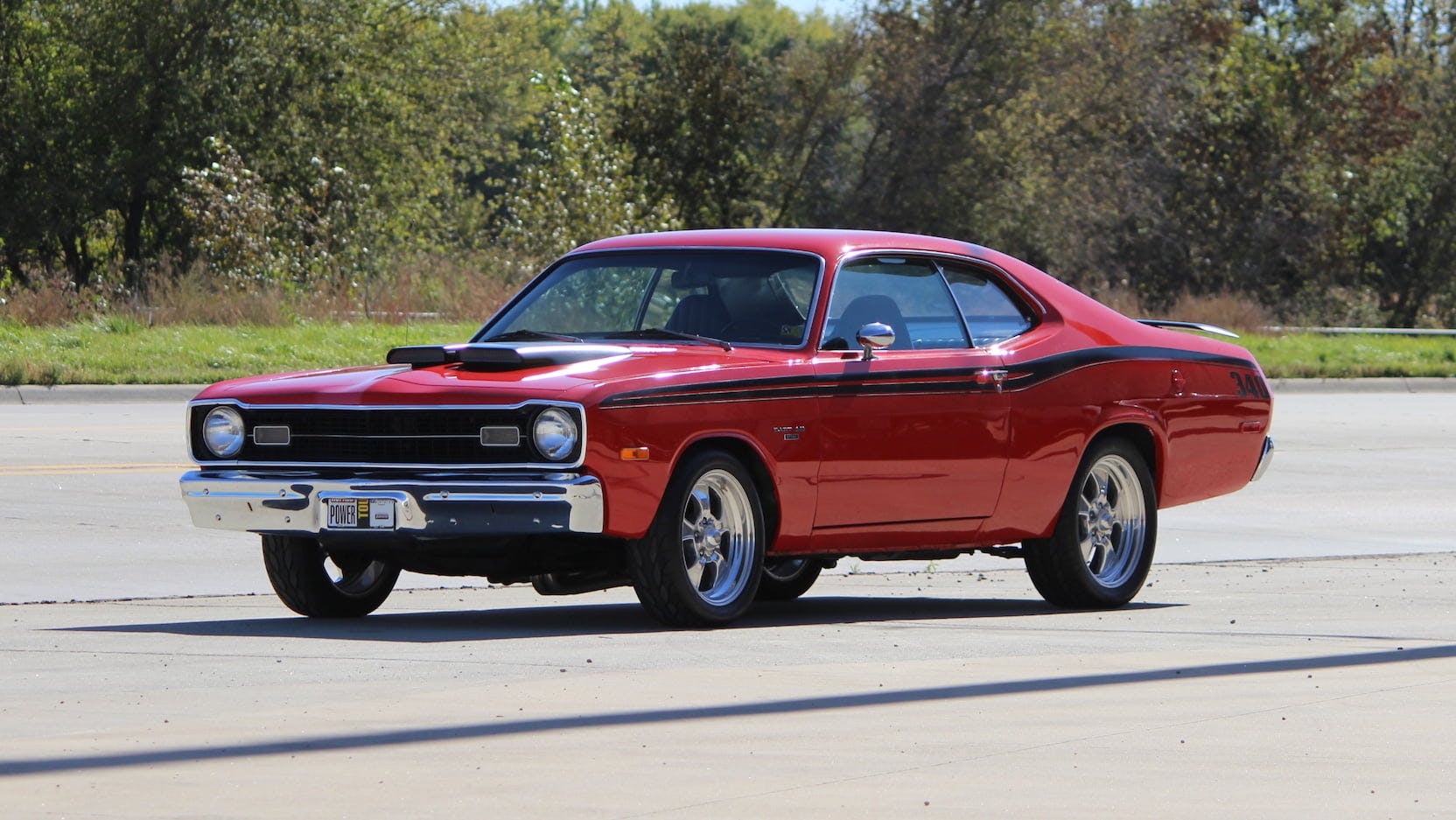


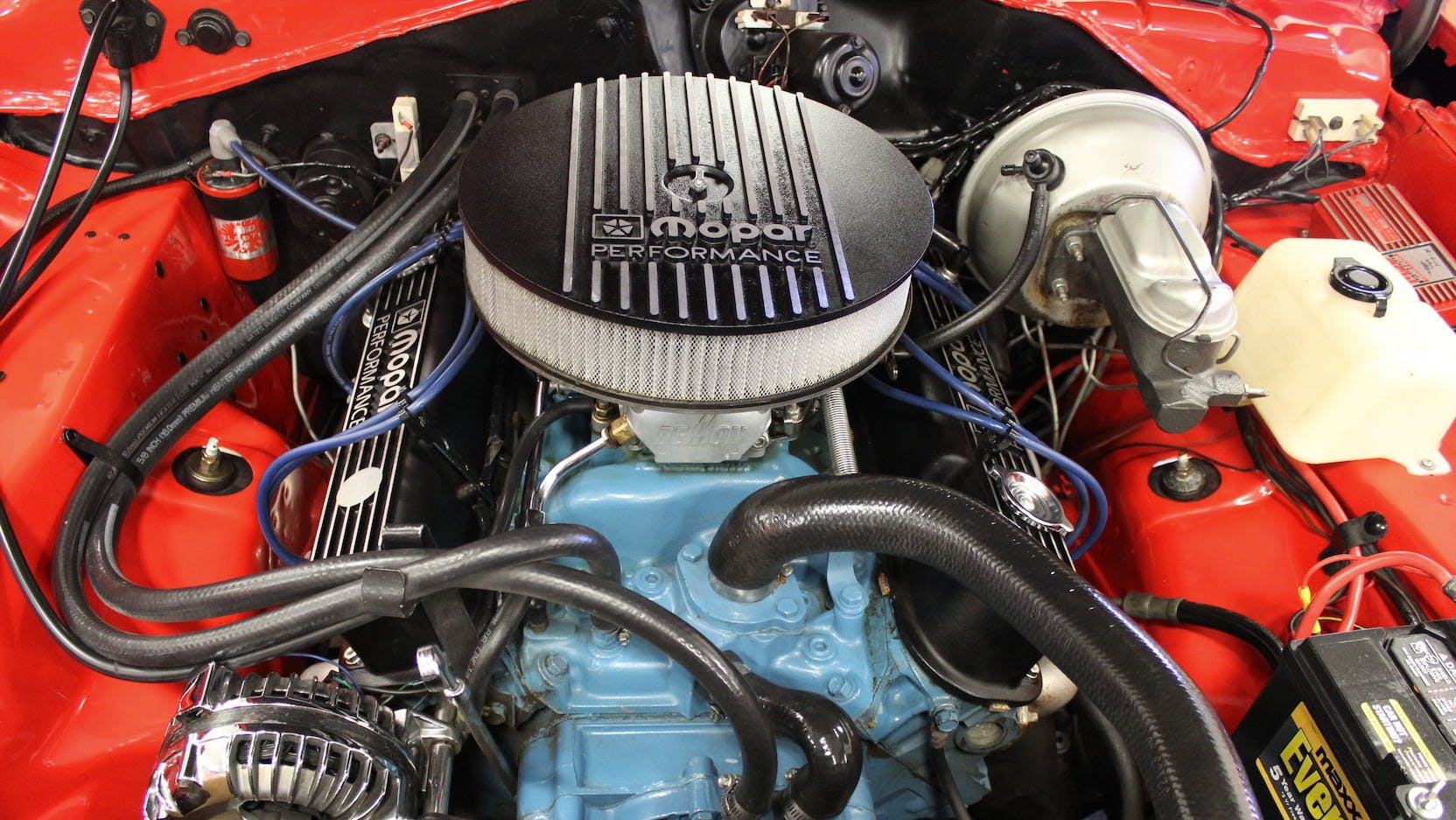
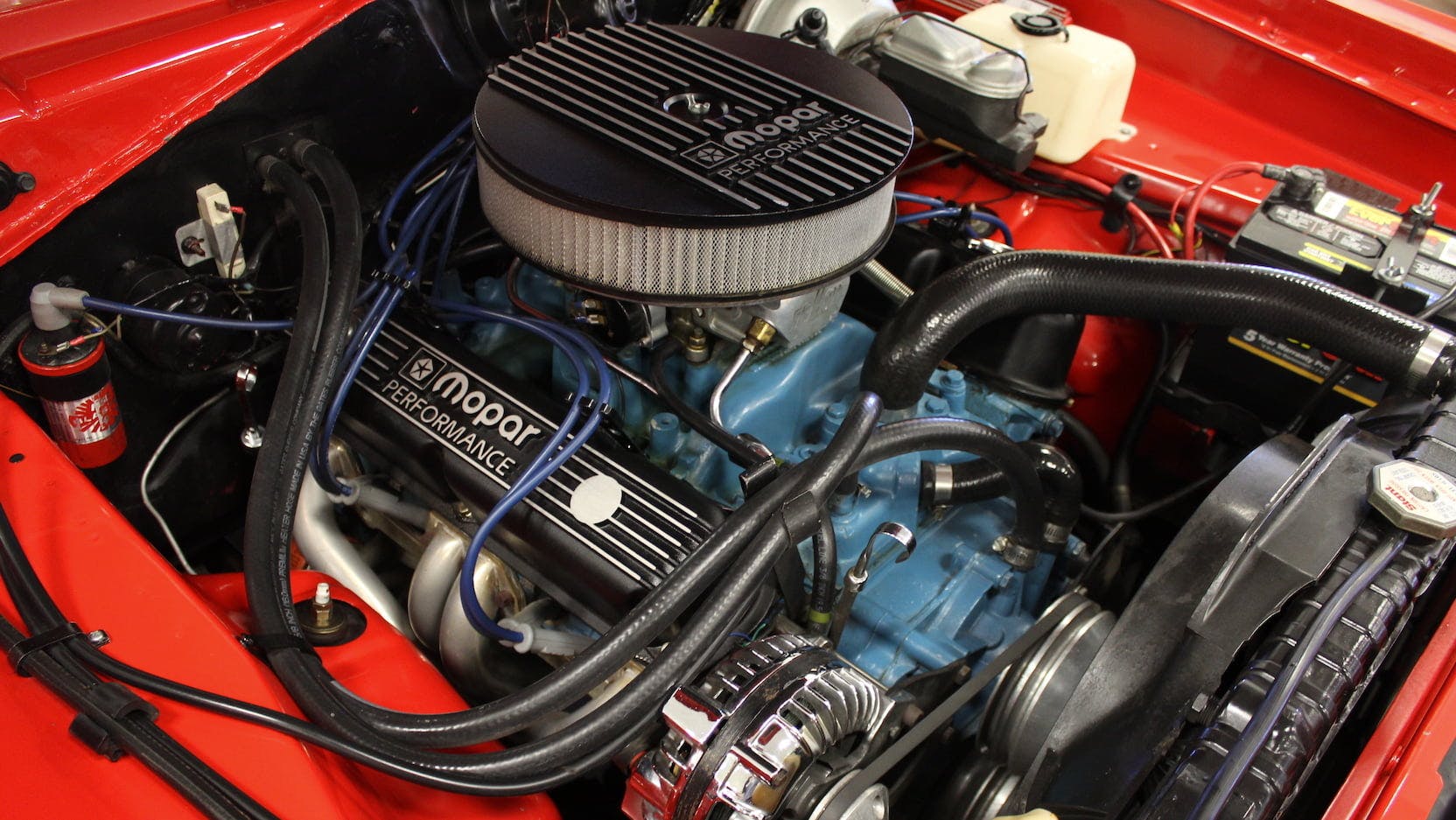
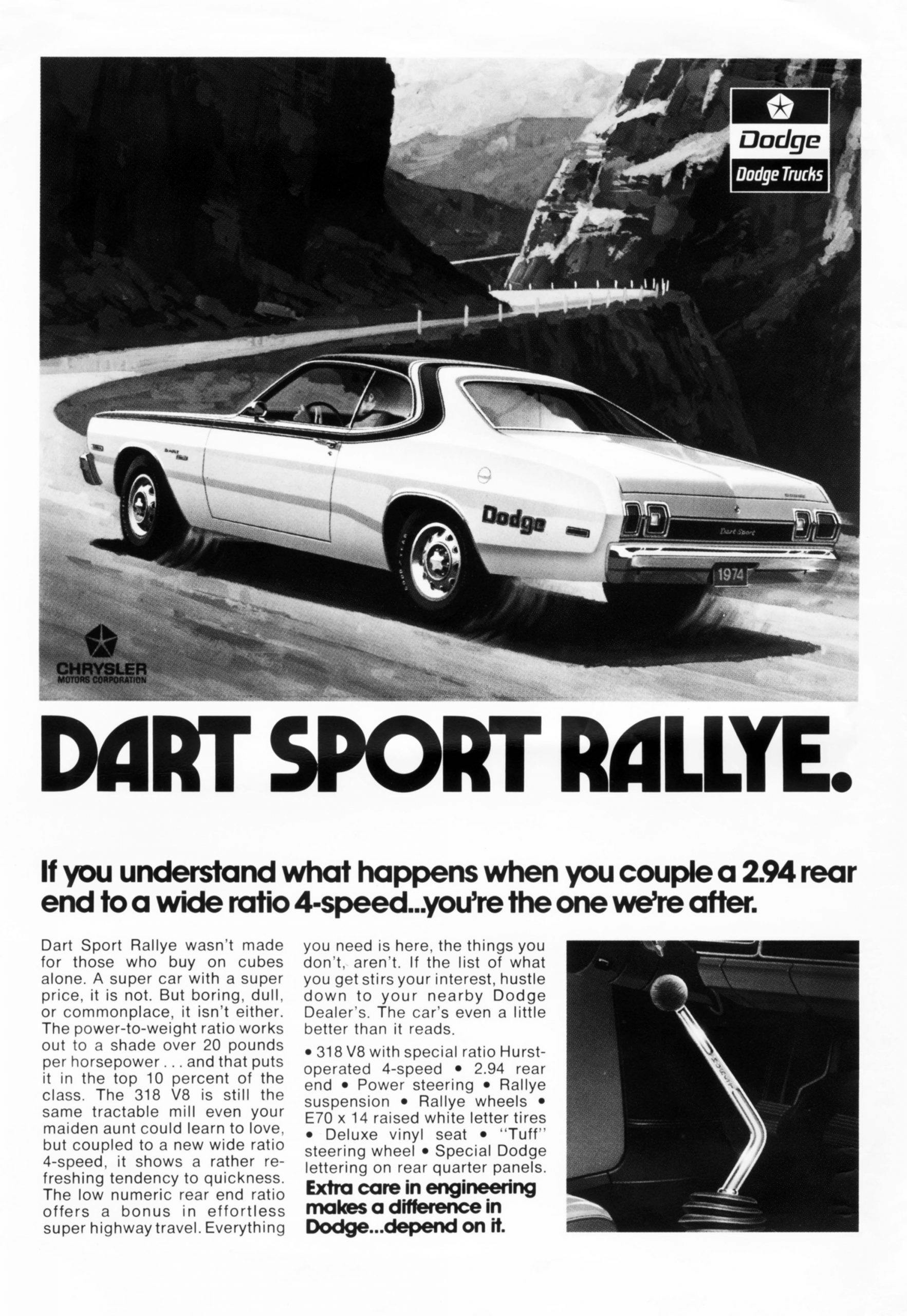



i love this stuff my grandpa as a 1967 4 speed dart and i love the body of the dart it look so mean and fast